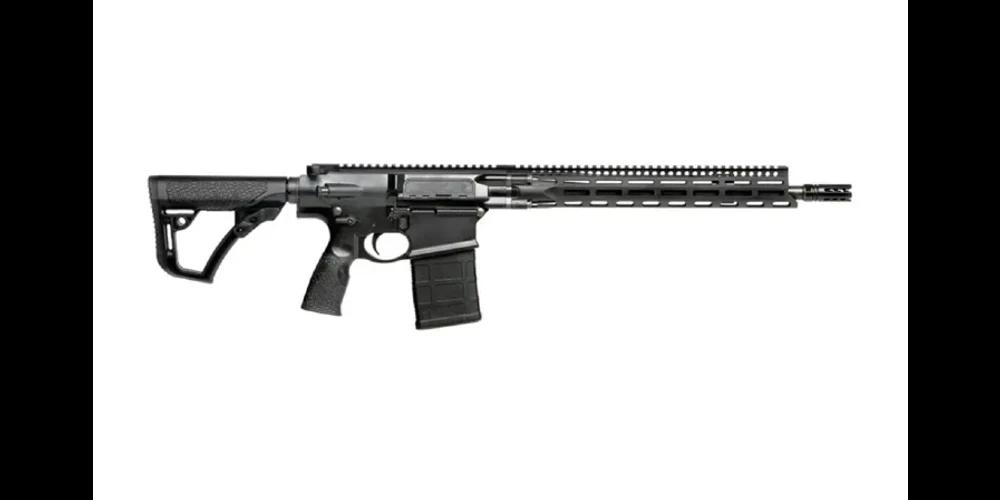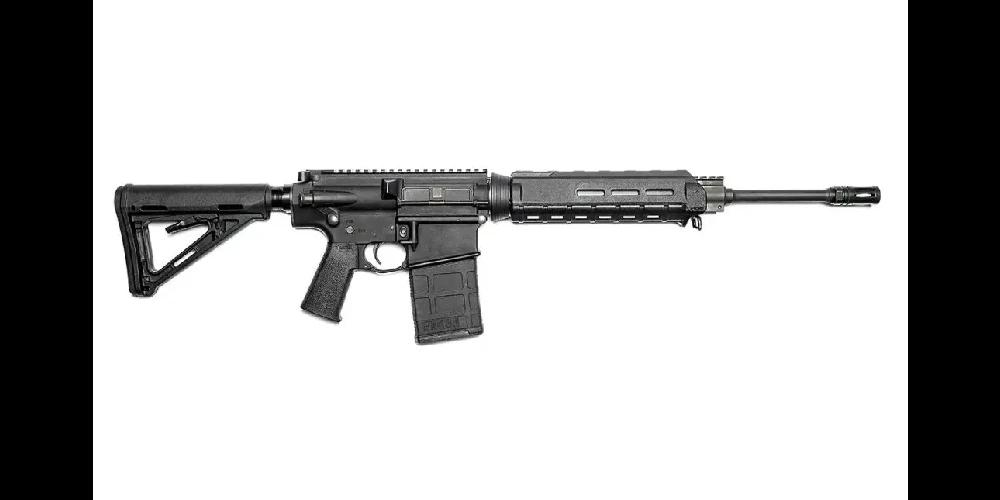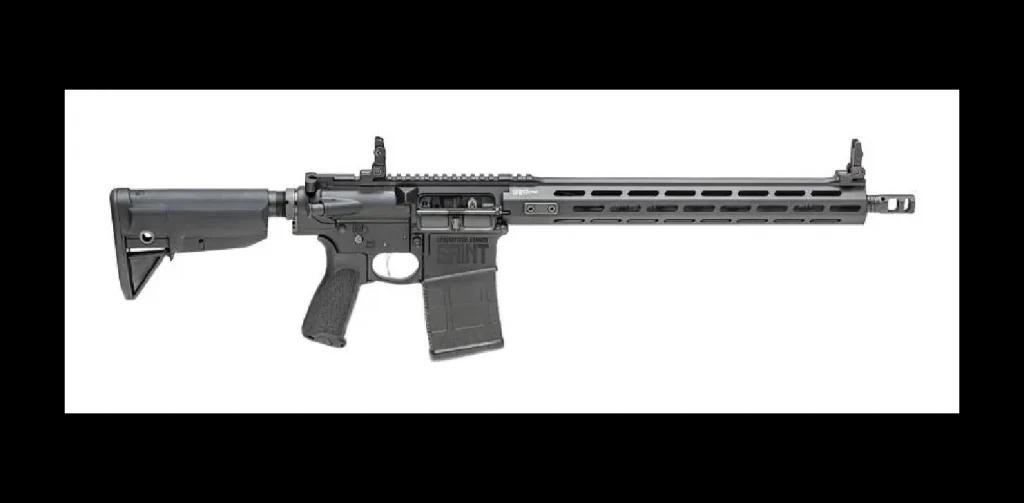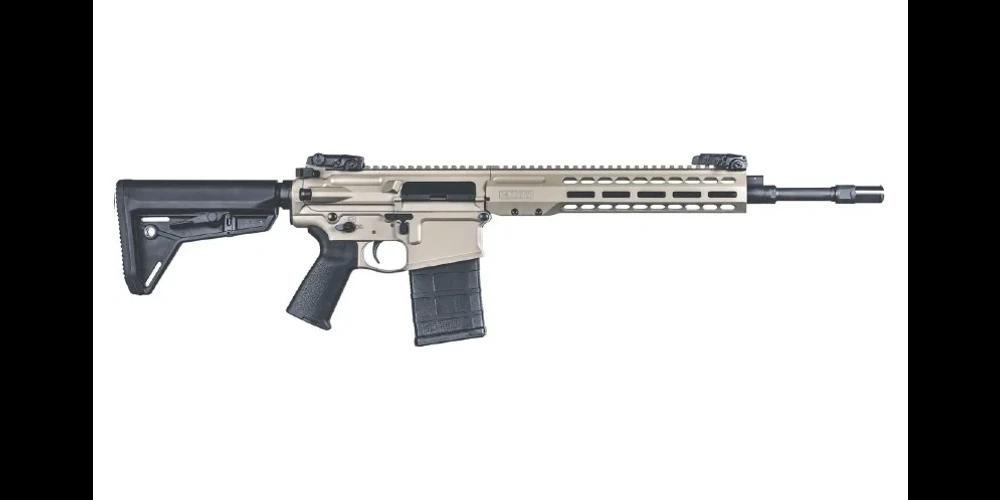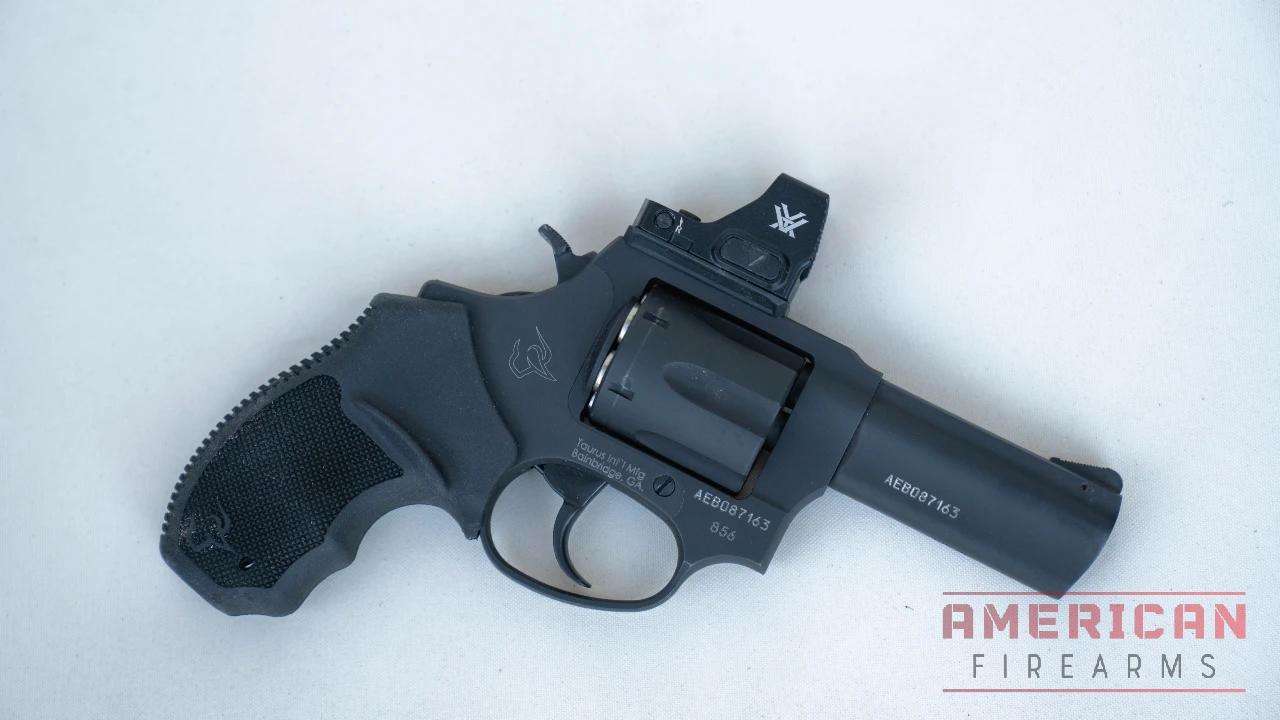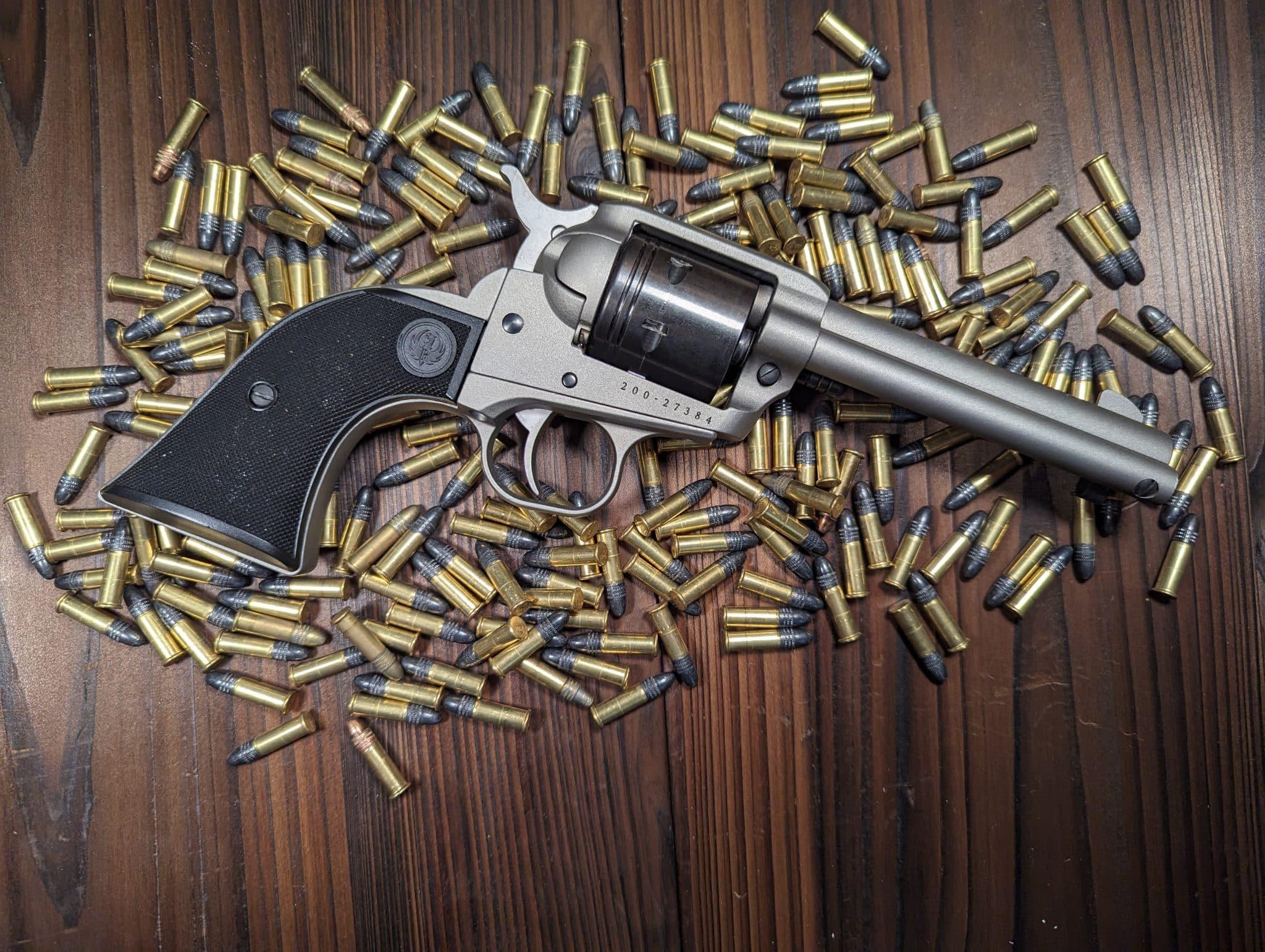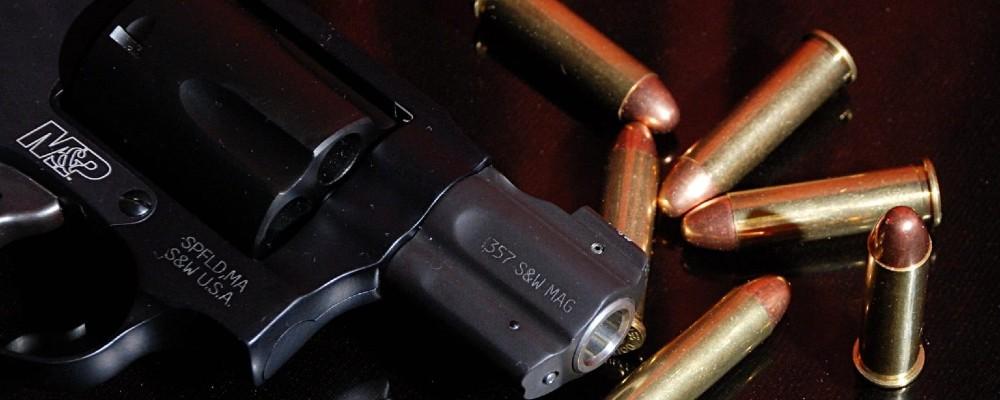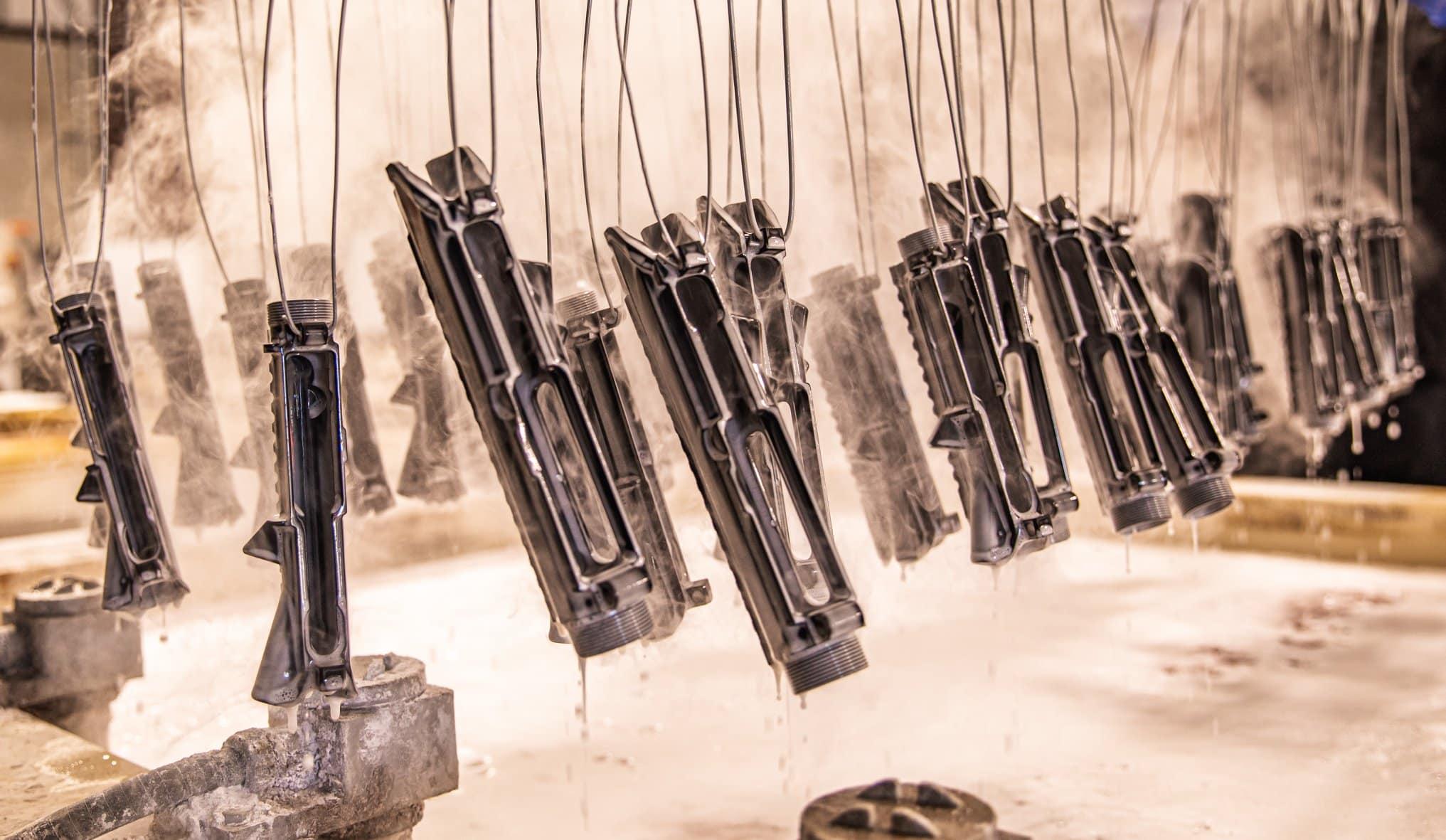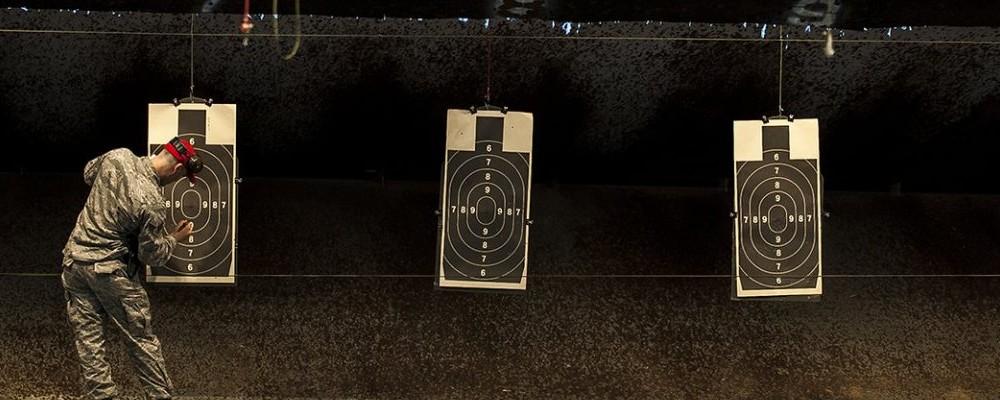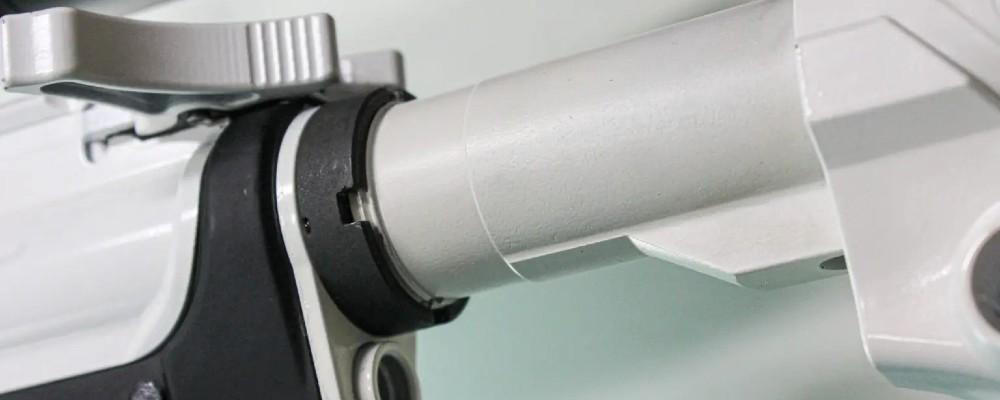Best AR-10 Rifles: Power, Precision, and Versatility
Written By
Kenzie Fitzpatrick
Competitive Shooter
Edited By
Michael Crites
Licensed Concealed Carry Holder
Share:
Products are selected by our editors. We may earn a commission on purchases from a link. How we select gear.
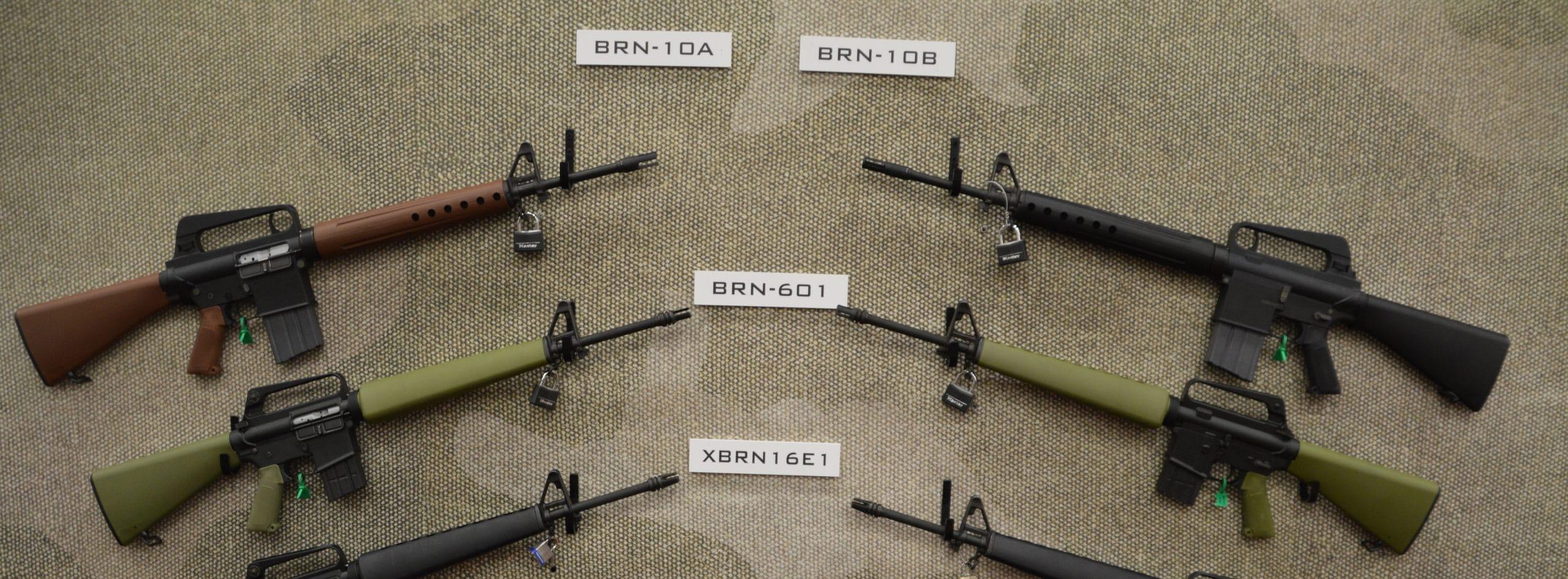
Updated
May 2025
The AR-10 is the grandfather of all modern sporting rifles — and the daddy of the comparatively smaller AR-15. At its core, the AR-10 is a semi-automatic rifle that takes everything you love about the AR-15 platform and scales it up to handle bigger, more powerful cartridges like .308 Winchester, 6.5 Creedmoor, and .260 Remington.
Think of it this way: if the AR-15 is a precision instrument designed for intermediate cartridges, the AR-10 is a sledgehammer that maintains surgical precision. It delivers the familiar ergonomics, modularity, and reliability of the AR platform while packing enough punch to drop elk at 400 yards or reach out and touch targets at distances where your AR-15 would start throwing in the towel.
The AR-10 uses the same direct impingement gas system as its smaller sibling, the same basic upper and lower receiver configuration, and many of the same controls you’re already familiar with. The key differences? Larger bolt, bigger magazine well, beefier buffer system, and — most importantly — the ability to chamber cartridges that pack a serious wallop downrange.
In This Article
AR-10 vs AR-15: The Quick and Dirty
While both rifles share DNA, they’re built for different missions:
AR-15: Lighter, faster handling, cheaper to shoot, perfect for varmints and medium-range work. Think of it as your daily driver — reliable, efficient, and gets the job done for most tasks.
AR-10: Heavier hitting, longer reaching, more expensive to feed, but brings authority to the table that the AR-15 simply can’t match. This is your heavy-duty truck for when you need to haul serious freight downrange.
The .308 Winchester that most AR-10s chamber delivers roughly twice the energy of 5.56 NATO at the muzzle, and that advantage only grows as distance increases. Where a 5.56 round might start losing steam past 300 yards, the .308 is just getting warmed up.
Who Should Consider an AR-10?
Long-Range Shooters: If you want to consistently ring steel at 600+ yards without breaking the bank on a custom bolt gun, the AR-10 delivers precision rifle performance with semi-auto convenience.
Big Game Hunters: Whether you’re chasing whitetails in the thick woods of the Southeast or elk in the wide-open spaces of the Mountain West, the AR-10’s power and quick follow-up capability make it a formidable hunting tool. It’s equally at home dropping a 300-pound wild boar as it is reaching out to a distant mule deer.
Competition Shooters: The 3-Gun and practical rifle competition world has embraced the AR-10 for its combination of accuracy and speed. When the targets are small and the distances are long, the extra horsepower matters.
Tactical Applications: Law enforcement and military users who need more punch than an AR-15 can deliver have turned to the AR-10 platform. It’ll punch through barriers that stop 5.56 NATO cold and delivers decisive terminal performance.
AR-15 Owners Looking to Expand: If you’re comfortable with the AR platform but want to explore longer-range shooting or bigger game hunting, the AR-10 lets you leverage your existing knowledge while stepping up in capability.
The Bottom Line: You should consider an AR-10 if you need more power, more range, or more authority than an AR-15 can provide, but you still want the modularity, reliability, and familiar handling characteristics that made you fall in love with the AR platform in the first place.
AR-10 History
In the mid-1950s, Eugene Stoner — an often unappreciated genius of American small arms design — crafted the rifle that became the AR-10 while working for Fairchild-ArmaLite, a California-based aviation tech venture. The company was exploring the use of lightweight materials from aircraft fabrication for firearms that offered accuracy and mobility in a single package.

The story goes that Stoner was hired by Armalite founder George Sullivan after they met at a local shooting range — proving that good things happen when gun folks get together to shoot.
It was the “Atomic Age,” after all, and the U.S. had its eyes on a future filled with rocket packs and moon bases. The AR-10 was billed in a 1955 press release by ArmaLite as “combining the accuracy of a sniper rifle with the firepower of a machine gun.”
Stoner’s original prototypes featured aircraft-grade aluminum receivers, a revolutionary piston-less direct impingement gas system, aluminum magazines, composite furniture with a straight-line stock, and a self-contained bolt carrier group. The goal was a reliable select-fire 7.62 NATO infantry weapon that weighed around 6 pounds — lighter than anything else on the market.
If all this sounds familiar to AR-15 enthusiasts, there’s an excellent reason for this. The AR-10 was the foundation that everything else was built on.

The Military Trials Heartbreak
Despite its innovative design, the early AR-10 prototypes had some growing pains. The composite aluminum barrel and oversized muzzle device weren’t quite ready for prime time. When submitted for U.S. Army rifle trials, the space-age firearm lost to the Army’s preferred wood-stocked M14.
This led to a five-year overseas licensing deal with a Dutch firm in 1957 to manufacture AR-10s for export, while Stoner and his team scaled the rifle down to .223 Remington for another round of U.S. Army trials. That scaled-down AR-10 became the AR-15 — and the rest, as they say, is history.
The Second Coming
Fast forward to the 1990s, when the original AR patents expired and Eugene Stoner was working for Knight’s Armament Company. Responding to an Army tender for a Semi-Automatic Sniper Rifle, KAC submitted the Stoner Rifle (SR) 25 — essentially an updated AR-10 that incorporated decades of AR-15 improvements.
The SR-25 featured a heavy match-grade barrel, free-floating handguard, and used many AR-15 components for commonality. Knight’s rifle won adoption as the M-110 SASS in 2005 and established the modern AR-10 standard we know today.
Why the History Matters
Understanding this evolution explains why today’s AR-10s feel so familiar to AR-15 shooters — they’re essentially scaled-up versions that benefit from 60+ years of platform refinement. The direct impingement system, the modular design, the familiar controls — it all traces back to Stoner’s original vision of a lightweight, accurate, reliable rifle.
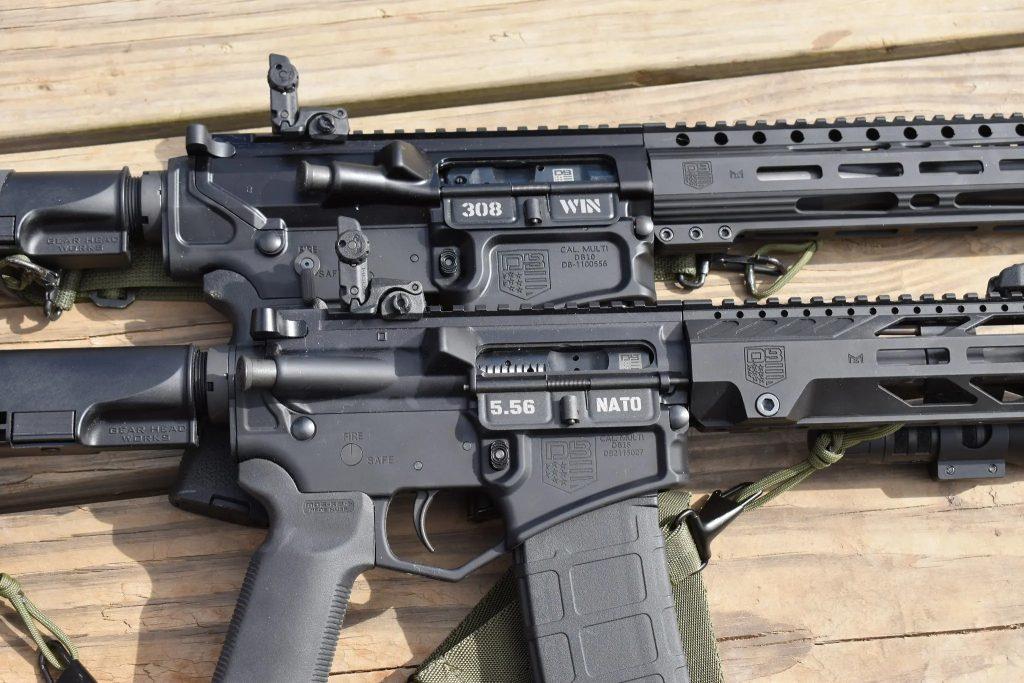
It took half a century, but the AR-10 concept has proven its worth. From Afghanistan’s long-range engagements to hunting camps across America, the AR-10 has found its place as the platform of choice when you need AR convenience with big-bore authority.
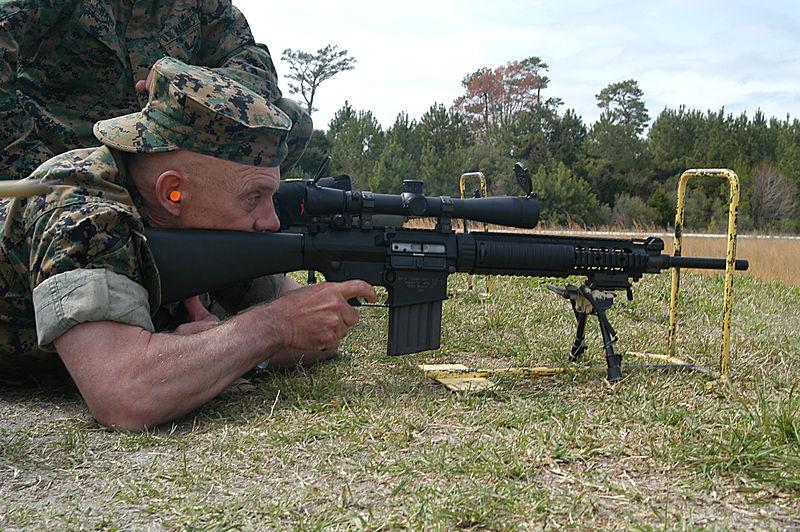
AR-10 Rifle Comparison
Below is my list of the best AR-10 rifles. I list the best choices in terms of value, performance, design, and cost.
Click on the name to head to the product page, read reviews and check prices or skip ahead to the list of AR-10 rifles.
Our Top Picks
Displaying 1 - 1 of 6
Awards
Price
Overall Rating
Description
Rating Categories
Accuracy
Ergonomics
Features
Fit & Finish
Reliability
Value

$995.99 at Palmetto State
Jump to Details49
While some turn up their nose at Palmetto State Armory guns, make no mistake, the company makes some seriously decent products.
8/10
8/10
7/10
7/10
9/10
10/10

$2599 at Palmetto State
Jump to Details51
Expect Daniel Defense to continue to be a big name in AR-10s in the coming years.
9/10
8/10
9/10
9/10
10/10
6/10
$2071.99 at Palmetto State
Jump to Details43
Includes a 4-pound Timney single-stage trigger, iron sights, and is geared towards 3-Gun and practical rifle competition.
8/10
7/10
6/10
8/10
8/10
6/10

$1326.99 at Palmetto State
Jump to Details44
DB has made a big splash on the AR market in the past decade and today offers more than 20 AR-10 rifle and pistol variants.
7/10
7/10
7/10
7/10
8/10
8/10
$1116.99 at Palmetto State
Jump to Details39
Springfield Armory, Inc. has been in the .308 battle rifle biz since before it was cool.
7/10
6/10
6/10
6/10
7/10
7/10
$1557.99 at Palmetto State
Jump to Details44
A big Marksman rifle that includes a top-end Magpul stock and 20-inch barrel.
7/10
8/10
8/10
6/10
9/10
6/10
| Name | Selection | Barrel Length |
|---|---|---|
Best Full-Size | 20" | |
Best Mid-Length | 18" | |
Best Carbine-Length | 16" | |
Carbine Runner-Up | 16" | |
Budget Pick | 16" | |
Best Light Weight | 16" | |
Best Marksman Rifle | 22" |
How We Picked
Barrel Length
We highlighted rifles that fit into the logical 16″, 18″, and 20″+ ranges.
Reliable Brands
Weight
Real-world Experience
More on our selection process
Detailed Reviews
1. Best Full-Size: Palmetto State Armory PSA-10
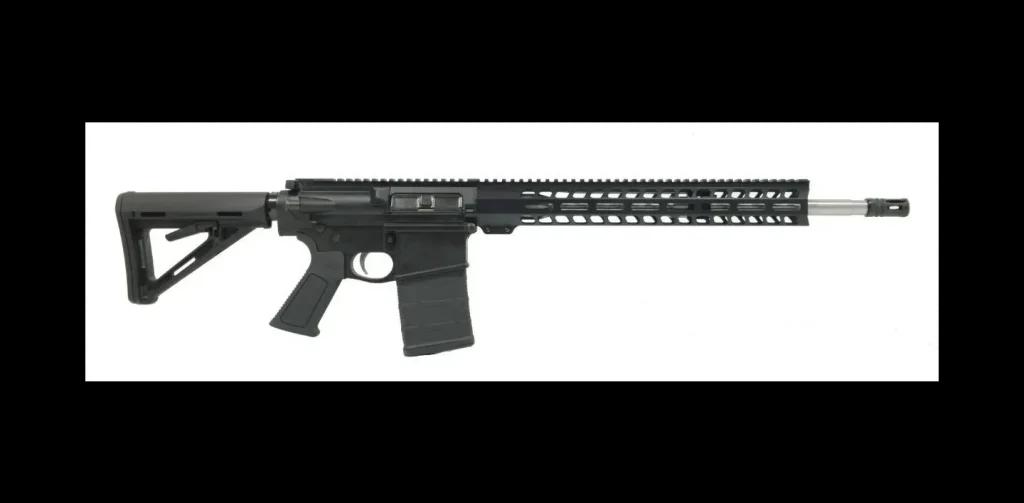
$995.99

49
EXCEPTIONAL
2026 Awards & Rankings
Performance Scores
Specifications:
- Weight: 8.8lbs
- Length: 39”
- Barrel Length: 20”
- Capacity: 20
- Height: 7.75” at the pistol grip
- Caliber:. 308
- Action: Direct Gas Impingement, Semi-Automatic
Pros:
- Reliable and affordable
- Adjustable gas block
- Builds on Gen 2’s strengths
- Better finish than the Gen 2
- Several configurations of barrel length and furniture
Cons:
- Seating mags takes more effort than the PA-15
- Gas block adjustment is a little clumsy
- Gas block and handguard use different allen key sizes
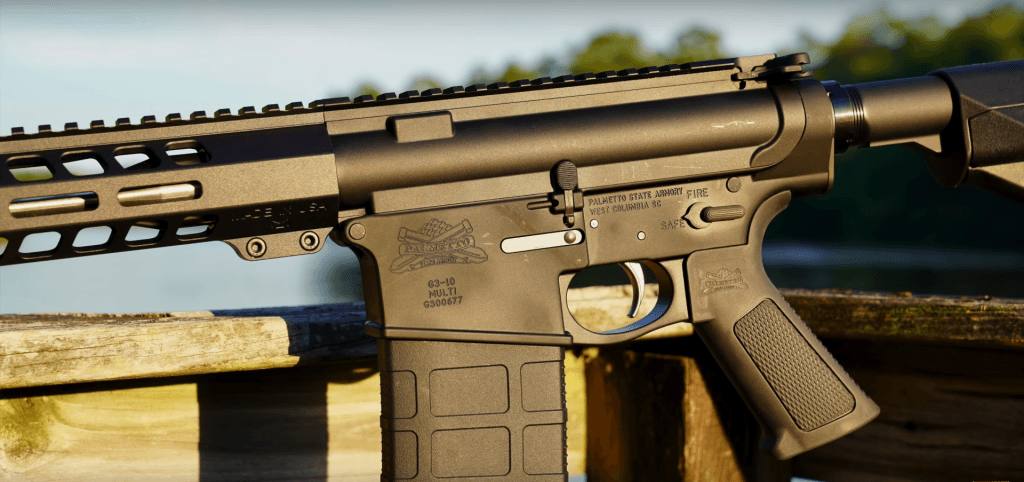
Palmetto State Armory’s AR-10 variant in .308 Win is dubbed the PA-10. The second-gen PA-10 is a great rifle that offers some nice upgrades over the Gen 2 model – most specifically a tunable gas block that will help dial out the tendency for these rifles to come, shall we say, a bit over-gassed out of the box.
Beyond creating a more tunable rifle, the adjustability also gives you room to dial in a suppressor or other muzzle device of your choosing. You’ll need either a reasonably long Allen key or to remove your handguard, but the adjustment is simple enough once you’ve got the right tool.
You’re not going to eliminate recoil, but you can adjust the PA-10 much more effectively than the Gen 2.
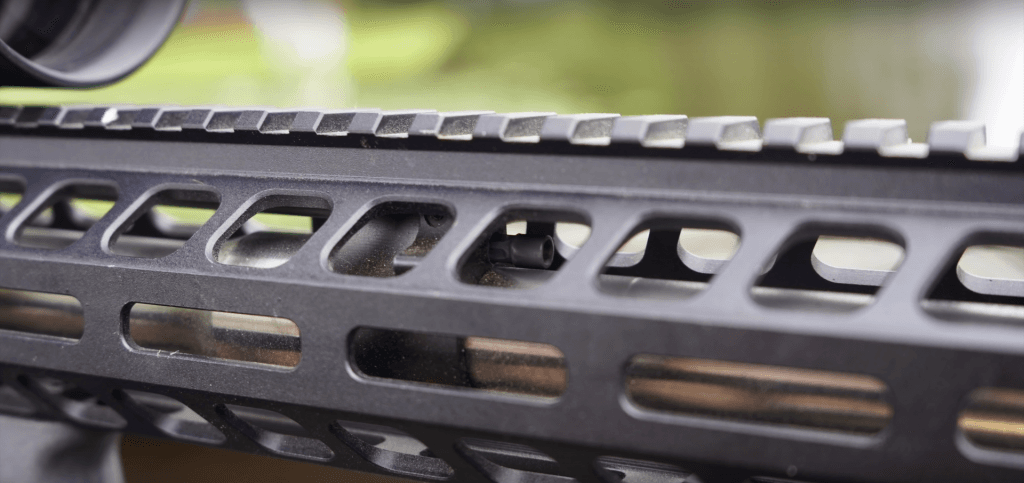
While some turn their noses up at Palmetto State Armory guns, make no mistake, the company makes some seriously decent products and is building a reputation to continue to do so.

Leveraging their massive supply chain as an AR parts supplier, Palmetto usually lists a dozen or so models of the PSA-10 on their site at any given time ranging from lightweight 16.5-inch carbines with “mil-spec” triggers to 20-inch Teflon-coated stainless steel rifles with 2-stage trigger packs – all with multi-position adjustable PSA stocks.

2. Best Mid-Length: Daniel Defense DD5 V4

$2599

51
EXCEPTIONAL
2026 Awards & Rankings
Performance Scores
Specifications:
- Weight: 8.6lbs
- Length: 39” fully extended
- Barrel Length: 18”
- Capacity: 5
- Height: 7.75” at the pistol grip
- Caliber:. 308
- Action: Direct Gas Impingement, Semi-Automatic
Pros:
- Quality DD barrel
- Rail is second to none
- Forged lower & integrated trigger guard
- Innovative charging handle
Cons:
- Significant recoil impulse
- 4-bolt barrel attachment system adds weight
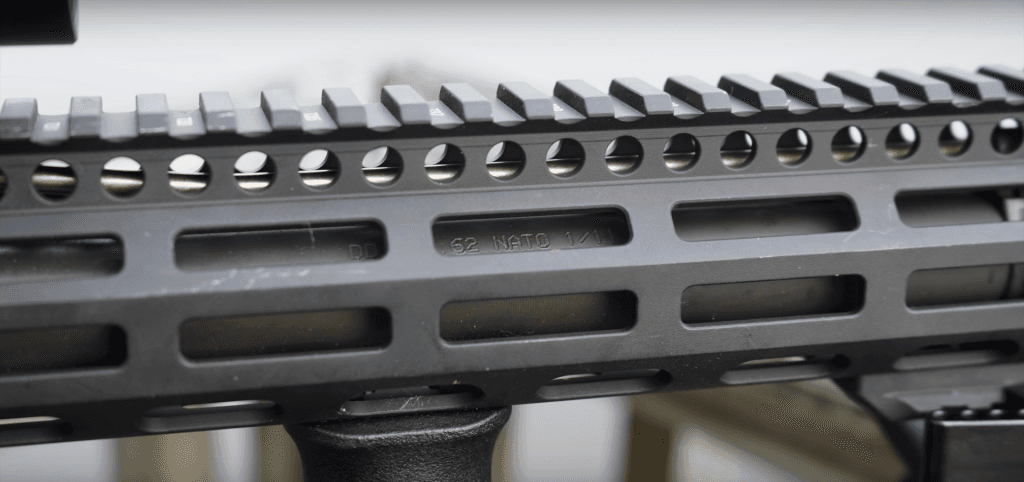
Georgia’s Daniel Defense started off making M4 rail systems, which naturally led to moving into production of all-up M4-style rifles, which in turn naturally led to up-sizing the same platform to 7.62 NATO. A lot of folks love Daniel Defense for obvious reasons — they make a great product.
The barrels are always top-notch, but some of the more interesting features include the ball-detent charging handle — which has replaceable latches for a nice level of customizability.

The SR-25-style Daniel Defense DD5 series was introduced in 2016 and now includes the 16-inch DD5V3 and 18-inch DD5V4.
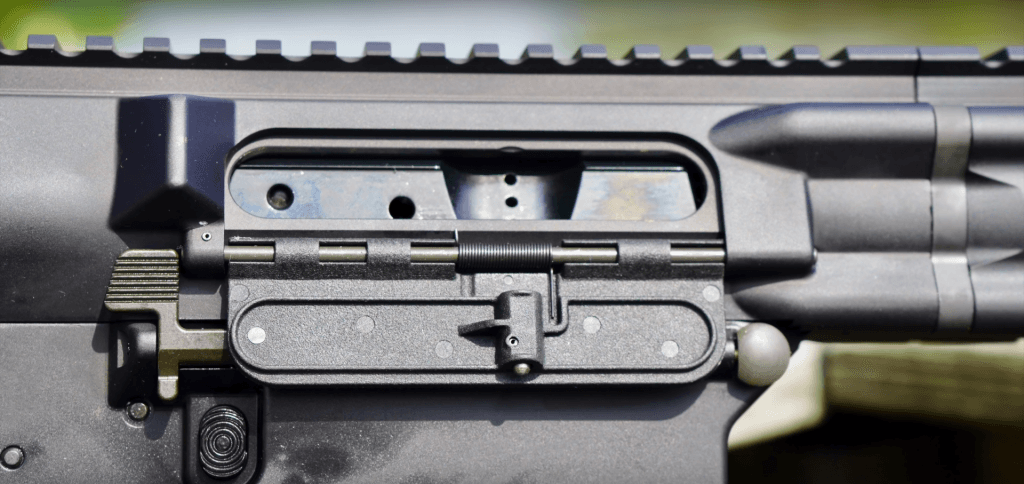
None of Daniel Defense’s guns are cheap — but they come standard with chrome-lined barrels, buffered super DLC-coated bolt carrier groups, and a user-adjustable gas block to help tweak use with suppressors– keep in mind Daniel Defense is a can maker as well.

Expect Daniel Defense to continue to be a big name in AR-10s in the coming years. While not a DD5, we did a hands-on review of the DDM4 V7 which gives you a sense of their rifle build quality.
3. Best Carbine-Length: Armalite BAT10
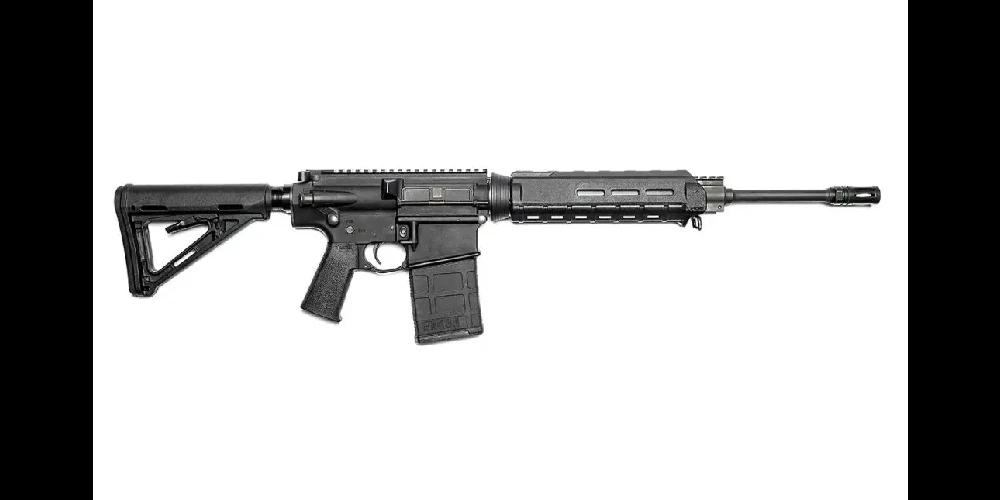
$2071.99

43
EXCEPTIONAL
2026 Awards & Rankings
Performance Scores
Specifications:
- Weight: 7. lbs
- Length: 35” collapsed
- Barrel Length: 16”
- Capacity: 20
- Height: 7.75” at the pistol grip
- Caliber:. 308
- Action: Direct Gas Impingement, Semi-Automatic
Pros:
- For the purists, owning an ArmaLite rifle is a selling point
- Big, chunky grip
- Super crisp single-stage trigger
- Fully adjustable stock & cheek rest
Cons:
- Ships without any optics or sights
- Only includes a single magazine
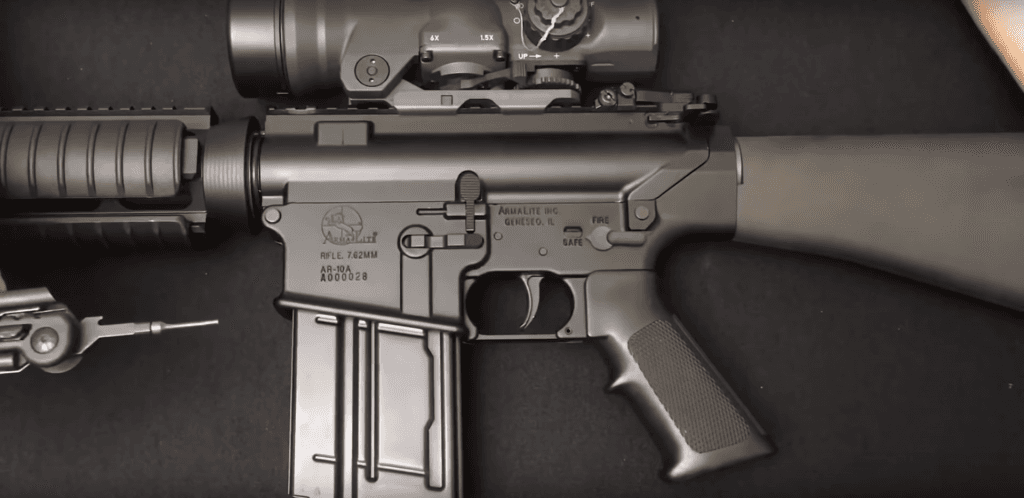
In 1995, Eagle Arms, a company known for their AR-15 variants, purchased the old ArmaLite trademarks and started marketing their guns under that iconic banner.
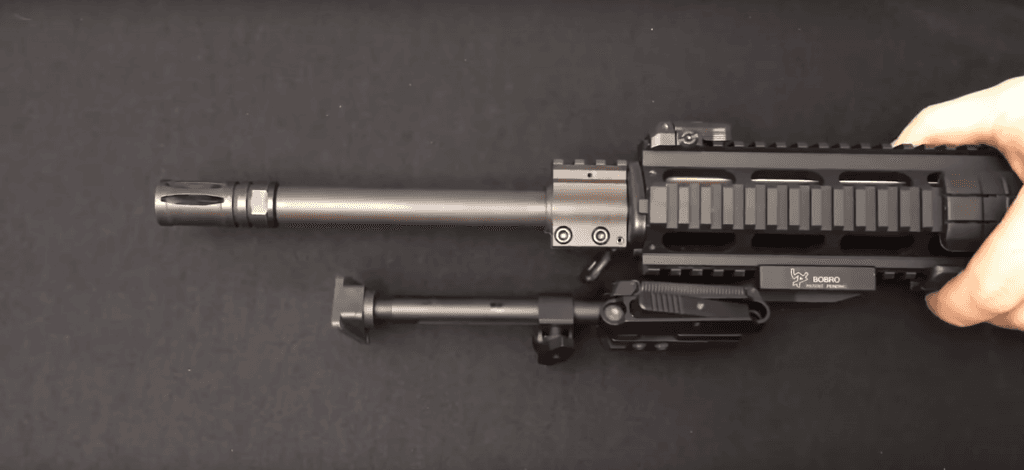
Since then they have been releasing more modern versions of the AR-10 in several models including the AR103GN which includes a 4-pound Timney single-stage trigger, iron sights, and is geared towards 3-Gun and practical rifle competition.

For those looking to reach out and touch something with sub-MOA accuracy, they have an AR-10 Tactical series which runs a 20-inch heavy barrel, a full-length MIL-STD 1913 12 o’clock rail for optics, and a multi-position adjustable MBA stock.
The trigger is super crisp, possibly one of the best factory triggers on an AR these days. Coupled with the fully adjustable stock and you have a superbly shootable .308 on your hands.
4. Carbine Runner-Up: Barrett REC-10
Usability:
Quality:
Value:
Overall:
Specifications:
- Weight: 8lbs
- Length: 37.75”
- Barrel Length: 16”
- Capacity: 20
- Height: 7.75” at the pistol grip
- Caliber:. 308
- Action: Direct Gas Impingement, Semi-Automatic
Pros:
- Immaculate build quality
- Impressive balance
- Soft-shooting
Cons:
- 3/4″ handguard
- Expensive

Departing from the long-range shooting .50-cal rifles which made them a household name, Tennessee-based Barrett Firearms in 2018 introduced a scaled-up variant of their REC7 5.56 NATO AR-15-style battle rifle. A .30-cal big brother, so to speak.
Given Barrett’s military and LE presence, the REC10, in part, is a product of their law enforcement client’s need for a more standardized AR-10 platform. The REC10 is a fighting gun, and Barrett has no shortage of SKUs in use with militaries around the globe.
The REC10 is another notch in their legacy of high quality rifles — and it lives up to the hype.
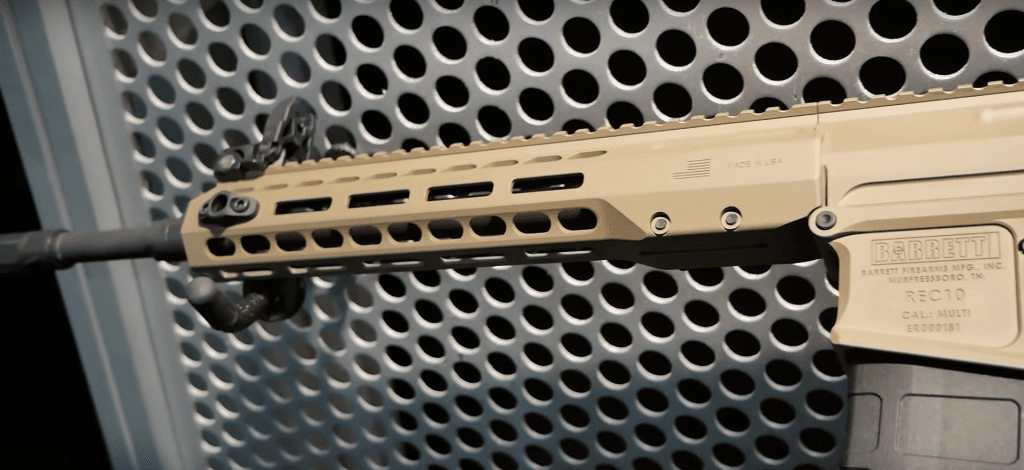
Chambered in 7.62 NATO, the REC10 brings a 1:10-inch twist chrome-lined barrel to the party along with all the Magpul M-LOK slots you could want and an oversized trigger guard.
The 3/4 length handguard is unique to the Barrett, which provides a good mix of mountable area while avoiding excess weight up-front. While full-length handguards are all the rage, Barrett thinks about their firearms a little differently.

Still in a carbine format, the REC10 offers up a lighter-weight profile for the 16-inch, button-rifled barrel and top it off with a mean muzzle brake and MBUS flip-up iron sights to help keep the weight down to 8-pounds.
This focus on balance is what sets the Barrett apart. The .308 is a round that offers long-range performance not found in an AR-15, so Barrett knows you’ll be adding glass to the gun. Focusing on that balance is what will helps the REC10 perform.
The gas tube is also unique — and dialed in a way that gives the REC10 less of a sharp recoil, and more of a pulse. That subtle pulse helps keep the gun on target, and speeds follow-on shots. That smooth function will also extend the overall life of the gun.
5. Budget Pick: Diamondback DB10

$1326.99

44
EXCEPTIONAL
2026 Awards & Rankings
Performance Scores
Specifications:
- Weight: 9.1lbs
- Length: 38”
- Barrel Length: 16”
- Capacity: 20
- Height: 7.75” at the pistol grip
- Caliber:. 308
- Action: Direct Gas Impingement, Semi-Automatic
Pros:
- Very well priced
- Muzzle brake is a smart addition for the .308 round
- Fluted barrel lightens up the package
- Beautiful in the Tungsten Cerakote color
Cons:
- Slim handguard profile can transfer heat to your support hand
- 16” barrel is a little on the short end to make the most out of .308
- Muzzle brake is a little on the small side to tame .308 recoil.
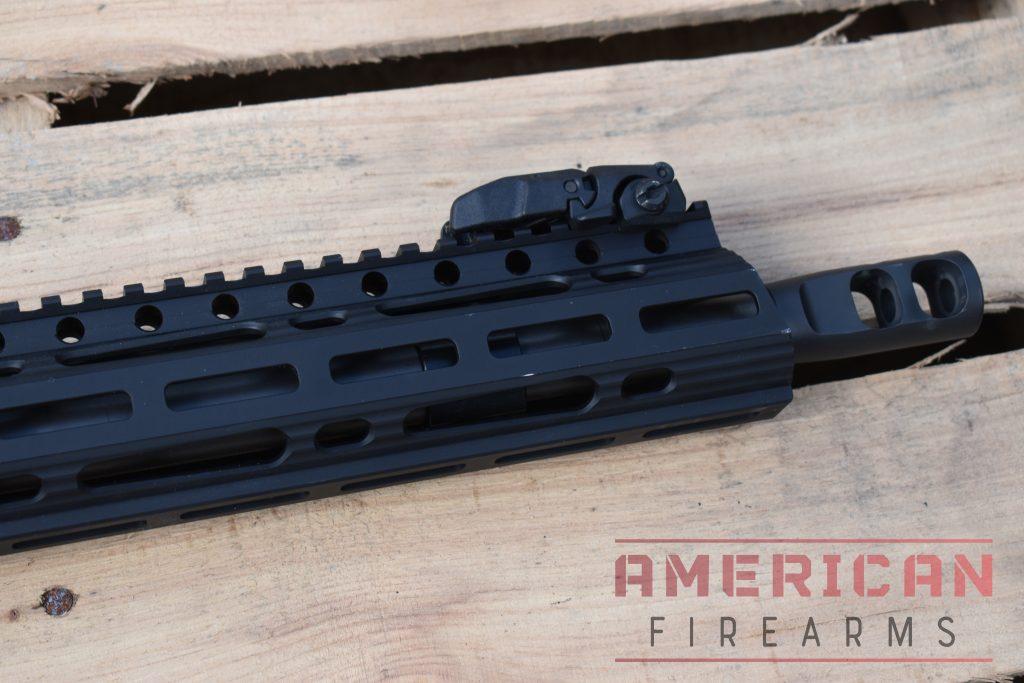
Florida-based Diamondback Firearms has made a big splash on the AR market in the past decade and today offers more than 20 AR-10 rifle and pistol variants.
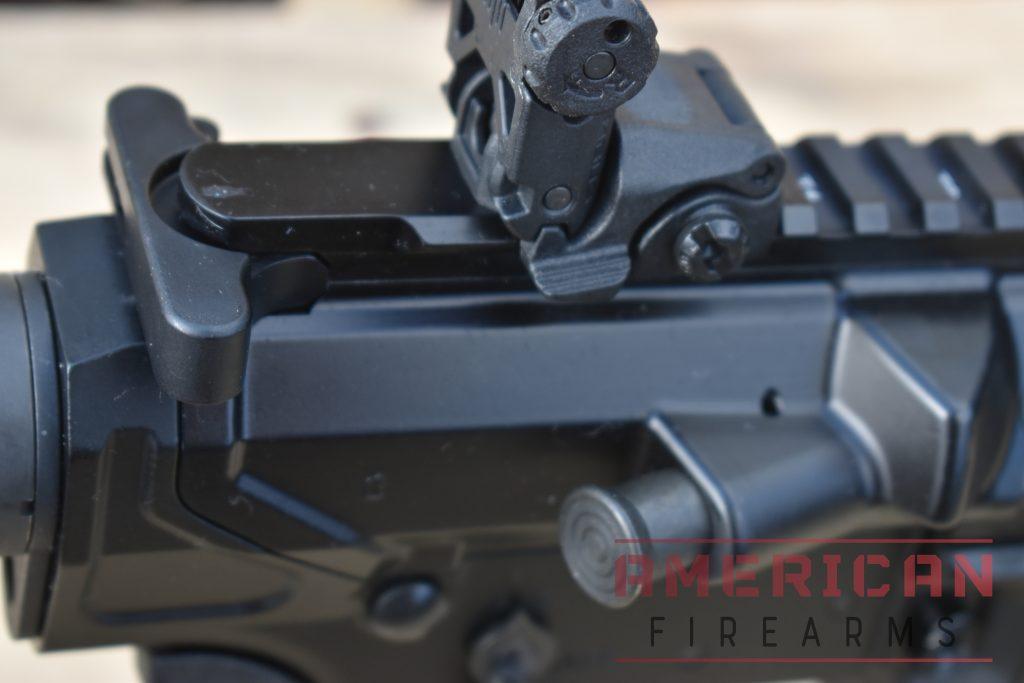
These range from their top-shelf Diamond series which have 416-R stainless steel barrels, CMC 2.5-pound trigger, and ACS-L stocks to the more affordable ($800~) Carbon series which still come standard with a forged lower, 4150 CrMov barrel, M-LOK rail, and MOE stock.
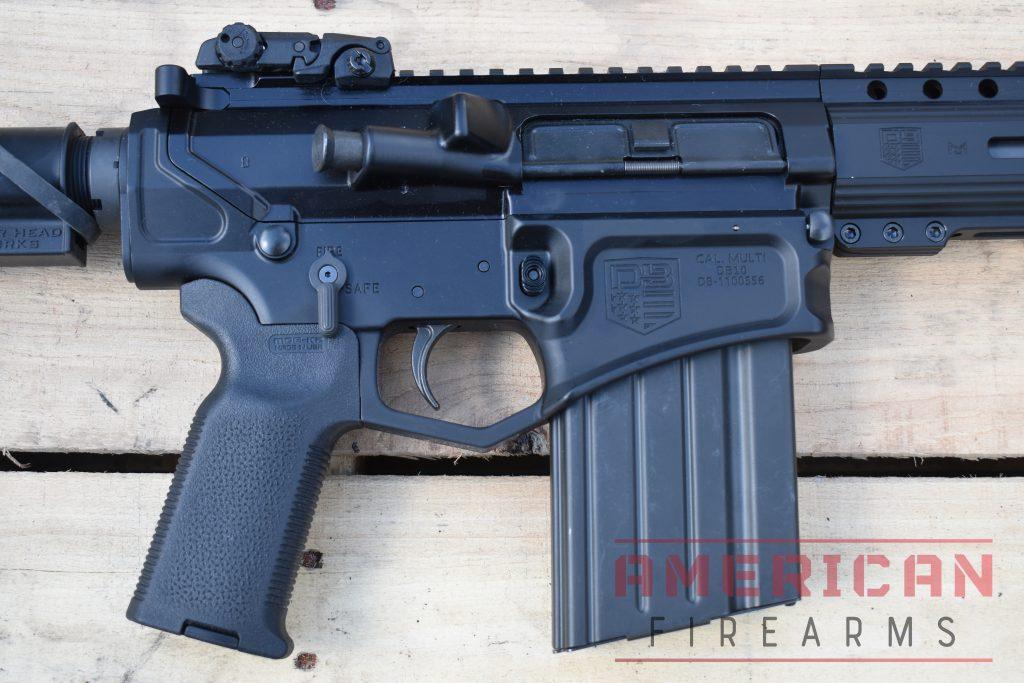
The DB10 is remarkably capable for a sub-$1000 AR, with sub-MOA groupings more than possible at 100 yards, and 6-inch steel easy to ring at 200.
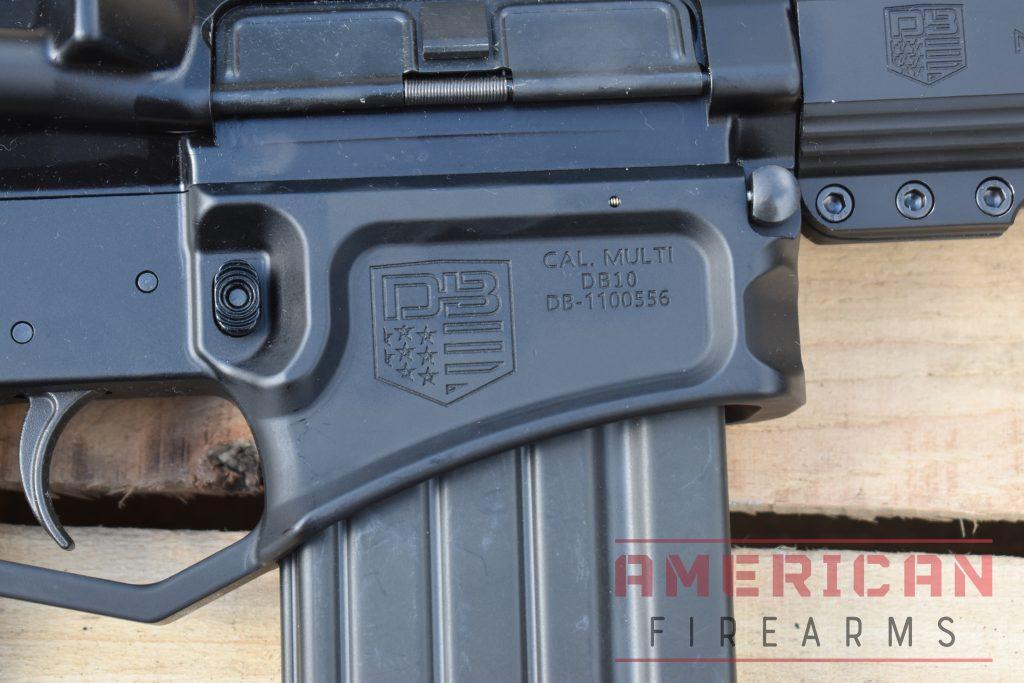
6. Lightweight Pick: Springfield Armory SAINT Victor
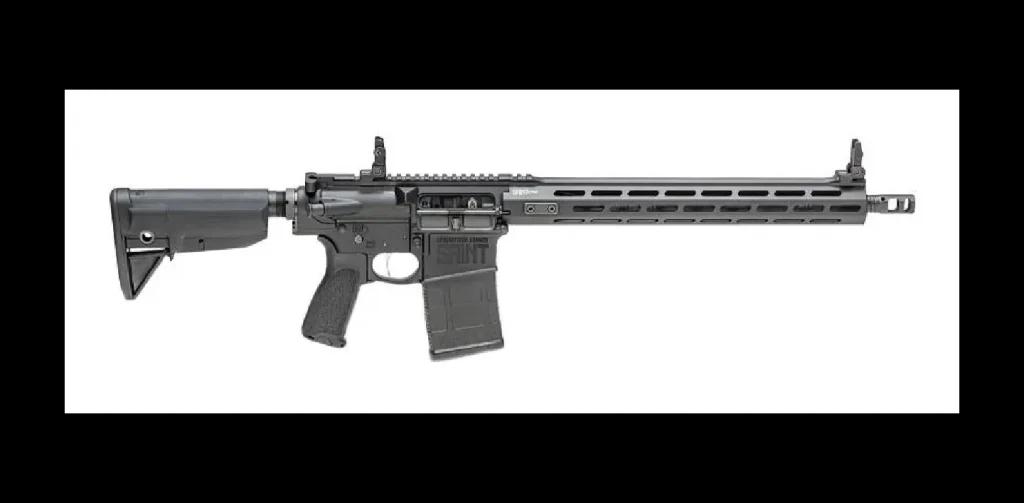
$1116.99

39
AVERAGE
2026 Awards & Rankings
Performance Scores
Specifications:
- Weight: 7.75lbs
- Length: 34.5” collapsed
- Barrel Length: 16”
- Capacity: 20
- Height: 7.75” at the pistol grip
- Caliber:. 308
- Action: Direct Gas Impingement, Semi-Automatic
Pros:
- Surprisingly light
- Single-stage, flat trigger included
- Flip-up battle sights included
- BCM stock & grip
Cons:
- Basic, single-sided GI charging handle
- Single-sided safety
- Front Picatinny rail offers little real estate
- Non-standard gas block adjustment
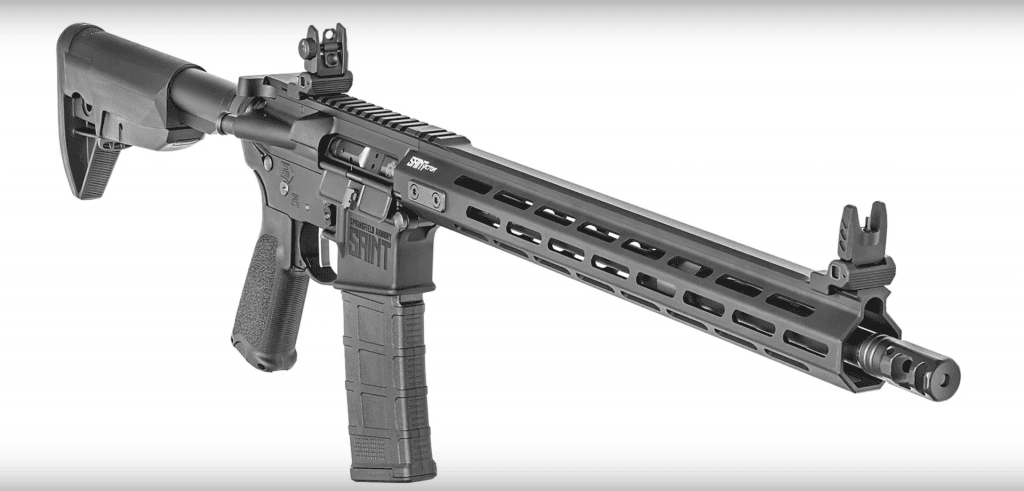
Borrowing the old U.S. Army’s defunct Springfield Armory name in the 1960s as they built semi-auto M1A variants of the M14, today’s Springfield Armory, Inc. has been in the .308 battle rifle biz since before it was cool.

It only made sense for the company to go AR, which they did recently with their SAINT series, and from there enter the AR-10 space with a .308 variant of the SAINT Victor last year.
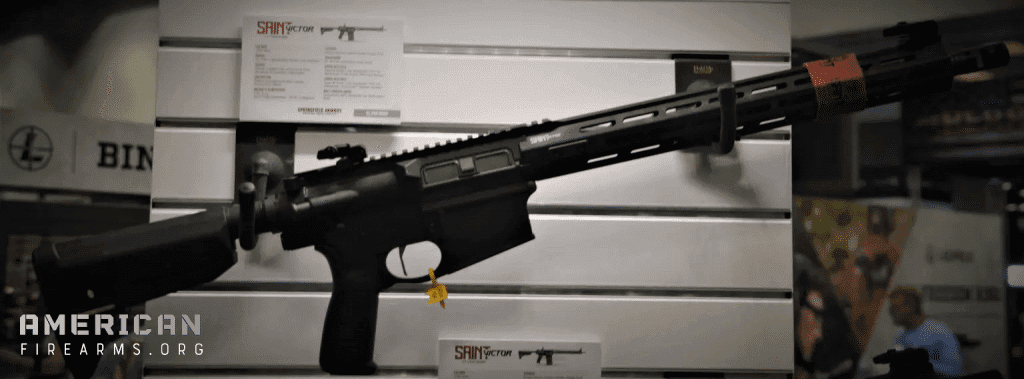
Springfield has done a lot of things right with their AR-10 entry, producing a light 7.8-pound 7.62 rifle that comes standard with a 16-inch CMV barrel in a 15-inch M-LOK aluminum handguard, flip-up iron sights, coupled with a nickel boron-coated flat-faced trigger and a BCM Gunfighter stock.
If you like single-action triggers the SAINT offers one of the snappiest triggers — surpassed only by the Armalite AR-10 in my opinion.
The BCM Mod3 grip is also a nice touch — both for folks who prefer a straighter grip angle and want to hide a few goodies in the grip itself. Can’t have enough Skittles at the range IMO.
It’s an AR 10 that’s made to get the job done from day one.
Room for improvement
That said, the single-sided charging handle and basic non-ambi safety aren’t particularly Gucci, but they’ll feel familiar to anyone who has spent any time around the AR platform.
It would also have been nice to have more Picatinny coverage at the top of the rail. Sure, this limited top rail is part of what contributes to the light weight, but the limited 2-inch rail essentially eliminates your ability to run any other accessories in the 12-o’clock position. A few M-Lok slots would probably achieve a better balance of mounting space and light weight.
Adjusting the gas block can’t be done via a side adjustment — it’s done down the front of the handguard. Dialing in the gas for specific use cases also uses different screws.
This front adjustment requires either Springfield’s tool or a very long allen wrench.
7. Best Marksman Rifle: Stag Arms Stag 10
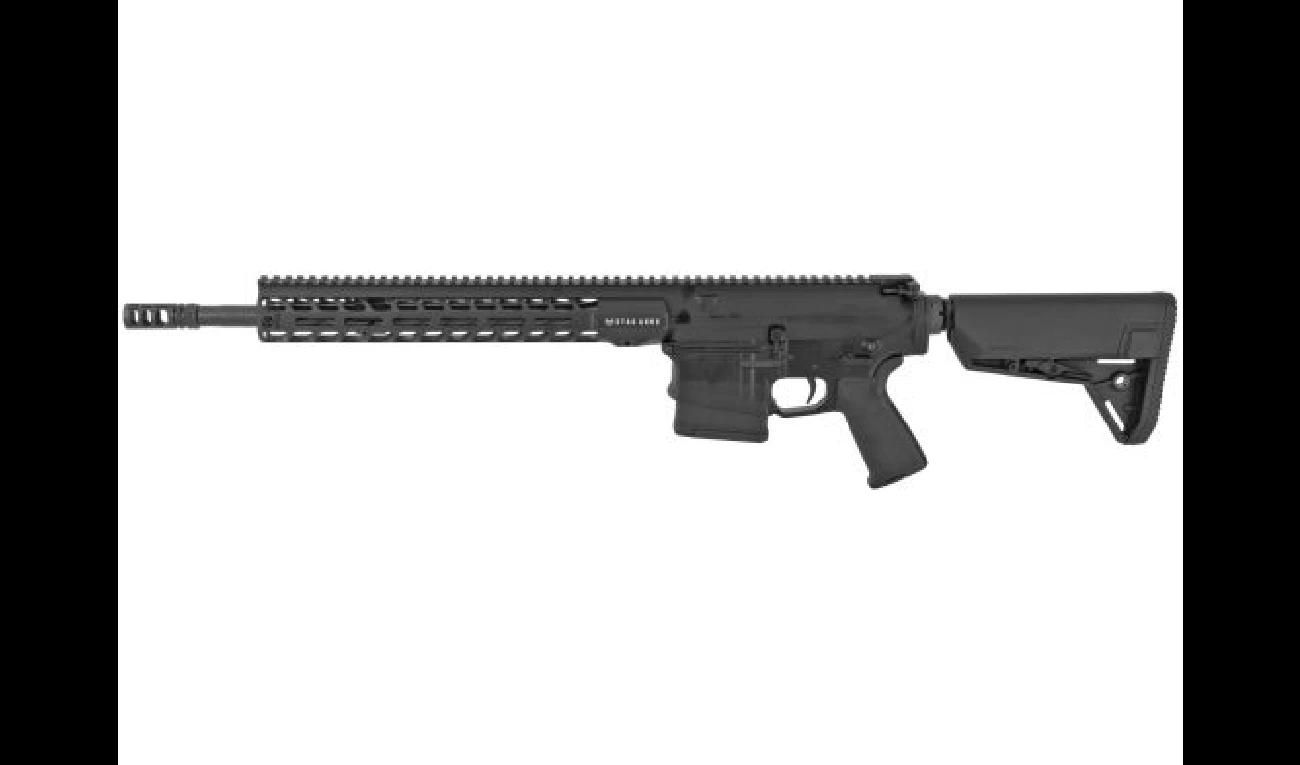
$1557.99

44
EXCEPTIONAL
2026 Awards & Rankings
Performance Scores
Specifications:
- Weight: 8.2 lbs.
- Length: 38.5”
- Barrel Length: 22”
- Capacity: 10 or 20
- Caliber:. 308
- Action: Direct Gas Impingement, Semi-Automatic
Pros:
- Ran flawlessly during testing
- Significant firepower
- Loads of accessory space
- Includes the Magpul Gen3 PRS buttstock
Cons:
- Big and long
- Small charging handle makes it a bit challenging to operate
- So-so trigger
Stag Arms, known for their AR-15s and AR-10s, offers the Stag 10, a large-frame AR chambered in 308 Winchester. Originally from Connecticut, they moved to gun-friendly Wyoming due to legislative challenges.
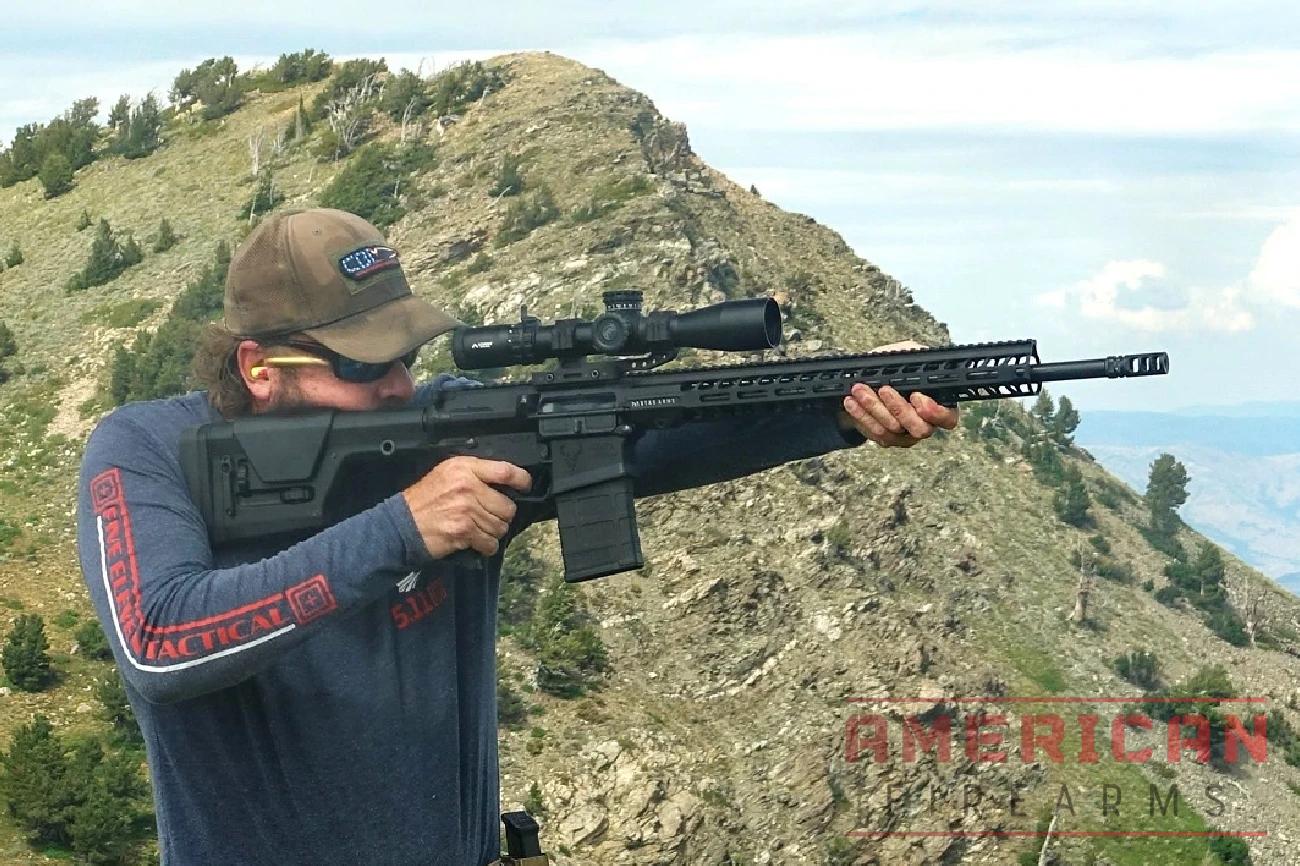
The Stag 10 comes in sixteen or twenty-inch barrel versions; I reviewed the twenty-inch model, which uses traditional SR-25 pattern magazines but also includes Magpul furniture, a customizable PRS Gen 3 buttstock, a two-stage trigger, and a VG6 Gamma muzzle brake.
The full-length handguard and optics rail add versatility for accessories, giving you a platform to reach out to longer distances with relative ease.
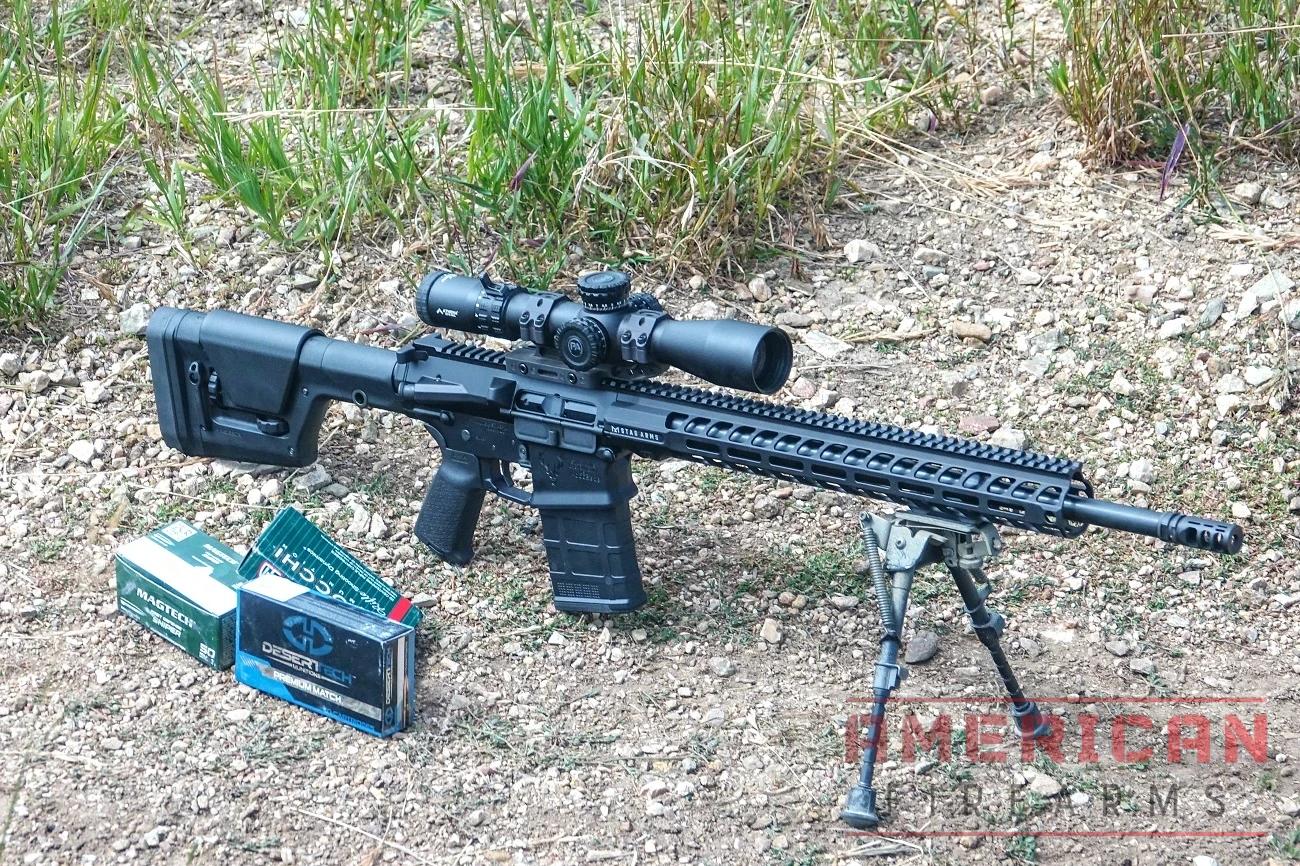
Testing the Stag 10 up in the Rocky Mountains, I used a Primary Arms GLx 3-18X44 scope and shot targets within 100 yards with ease. Despite its size, transitions between targets were smooth.
The VG6 muzzle brake effectively reduced recoil, allowing me to achieve 2 MOA accuracy even at 500 yards. Yes, it’s also decidedly loud, but that comes with the .308 territory.
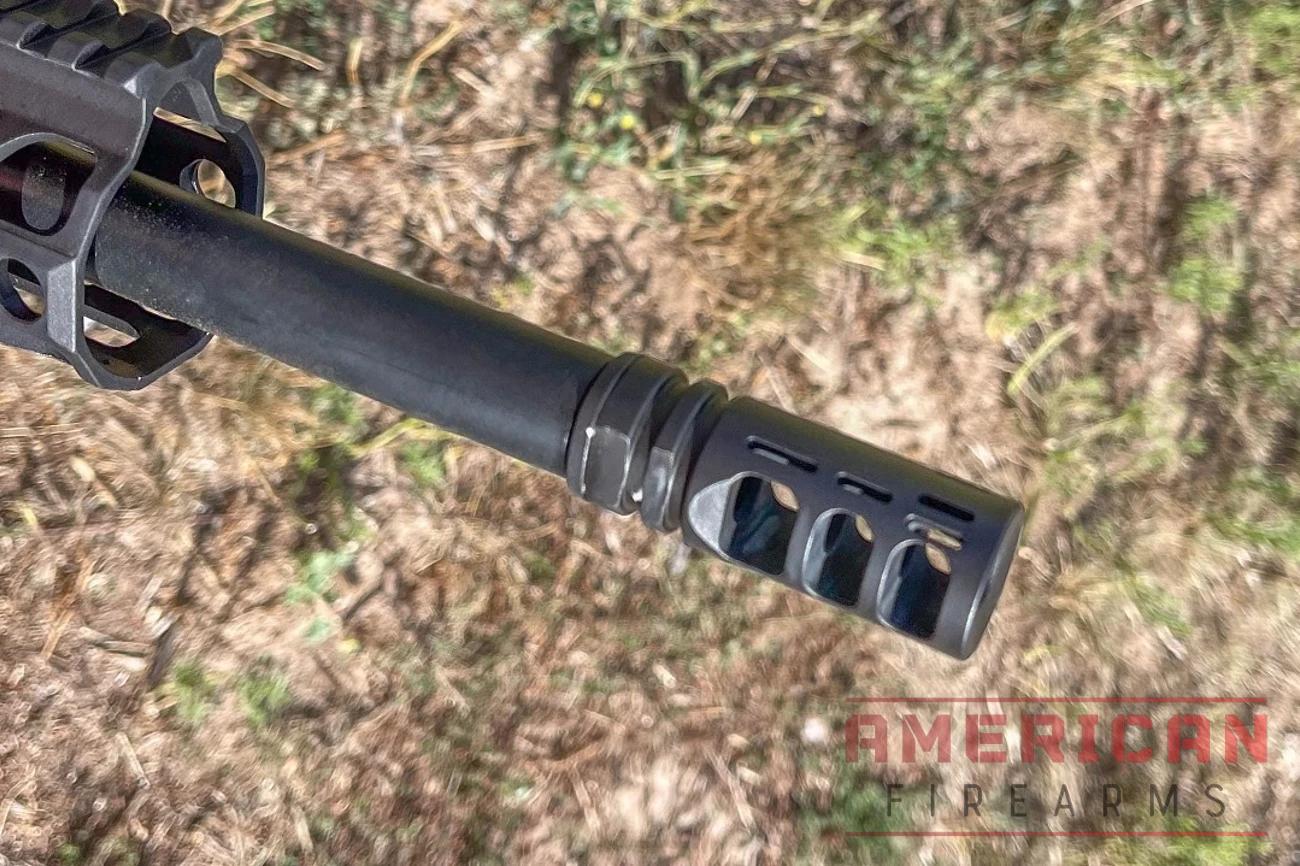
With a rifle-length gas tube, it utilizes classic AR direct impingement action. The Magpul MOE grip is comfortable enough if a little “off the shelf” for a $1,500 rifle. That said the inclusion of the adjustable Magpul Gen3 PRS buttstock does give you a more tailored fit than most OEM buttstock, and after raising the comb I had the Stag 10 feeling right at home.
Its ChroMoly steel barrel is going to give you thousands of rounds of use before worrying about a barrel swap, and the ⅝-24TPI threads accommodate a variety of muzzle accessories, which I tested with a few suppressors from my collection. Its M-Lok compatible handguard promotes additional accessory attachments as well.
The Stag 10 stands out for its reliability, performance, significant firepower, long-range accuracy, adjustable comfort, and its availability in both right and left-handed versions.
Of course, it’s not a small rifle, so some users might find it too bulky or heavy for their purposes. Also, the charging handle is on the smaller side, and its price might seem a tad high for its specific collection of features.
Combining the benefits of the AR platform with power and quality, it’s a solid choice for those who want a performant AR-format marksman rifle.
Why an AR-10?
The AR-10 isn’t just a bigger AR-15 — it’s a fundamentally different tool that excels where its smaller sibling starts to show limitations. Here’s why you might choose to step up to the .30-caliber world:
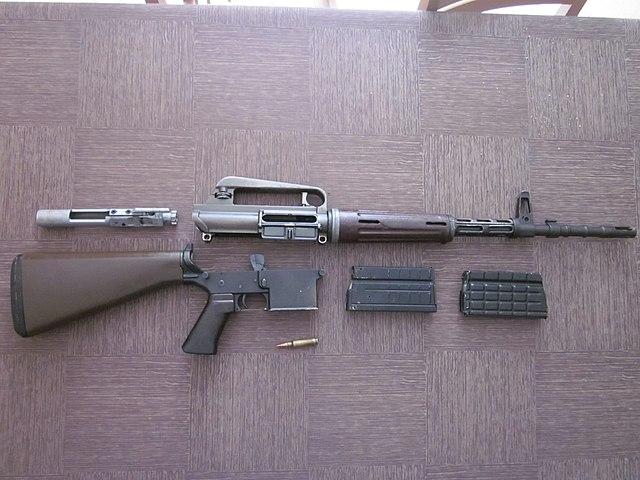
Long-Range Authority
While an AR-15 might start losing steam past 400 yards, the AR-10 is just hitting its stride. The .308 Winchester maintains effective energy and accuracy well past 800 yards, making it a legitimate long-range platform right out of the box. You’re not just reaching farther — you’re hitting harder when you get there.

Hunting Versatility
The AR-15 is fantastic for varmints and smaller game, but when you’re talking about whitetails, elk, wild boar, or moose, you want something with authority. The .308’s proven terminal performance has been dropping big game for decades, and the AR-10 delivers that power with the convenience of semi-automatic follow-up shots.
In thick cover where shots come fast, the AR-10’s quick handling and familiar controls can mean the difference between filling a tag and going home empty-handed. In open country where shots stretch long, the .308’s flat trajectory and retained energy give you confidence at distances where other cartridges start falling short.
Barrier Penetration
For tactical applications, the .308 will punch through barriers that stop 5.56 NATO cold. Car doors, intermediate barriers, light cover — the heavier bullet maintains its trajectory and terminal performance where lighter rounds deflect or fragment.
Familiar Platform, Bigger Results
If you’re already comfortable with the AR platform, the AR-10 lets you leverage that knowledge while stepping up in capability. The controls are essentially identical, the manual of arms is the same, and many accessories cross over. You’re not learning a new platform — you’re upgrading an existing skill set.
Competition Edge
In practical rifle competitions where targets vary from close-range movers to long-range precision shots, the AR-10’s versatility shines. The extra power means better performance on steel targets, while the familiar handling keeps your times competitive.
Future-Proofing
As shooting sports evolve and hunting regulations change, having a platform that can handle everything from 100-yard deer to 600-yard elk gives you options. The AR-10’s modularity means you can reconfigure the same rifle for different missions — swap barrels, change optics, adjust the stock — and you’ve got a different tool.
The Reality Check
The AR-10 isn’t perfect. It’s heavier than an AR-15, more expensive to shoot, generates more recoil, and produces more noise. But if you need the performance it delivers — whether that’s dropping a bull elk at 350 yards, consistently hitting targets at 600+ yards, or having the authority to handle serious business — the trade-offs are worth it.
Think of the AR-10 as the platform you graduate to when the AR-15’s limitations start holding you back rather than the rifle you start with. It’s not necessarily better than an AR-15 — it’s just designed for different missions where power and range matter more than light weight and low recoil.
Who Uses the AR 10?
Initially, the AR-10 was a military rifle. In 1954, George Sullivan, the owner of Armalight Manufacturing, a subsidiary of Fairchild Aviation, was out at a shooting range testing his very own AR-10.
Development of the AR-10 started in an attempt to win military contracts to replace the venerated M1 Garand. Firing the 7.62×54 NATO, with a 20-round lightweight aluminum ‘waffle’ magazine, aluminum steel composite barrel, a newly patented gas-operated bolt carrier system, and a few forged alloy parts led to a rifle that weighs less than 7 lbs (6.82 to be exact).
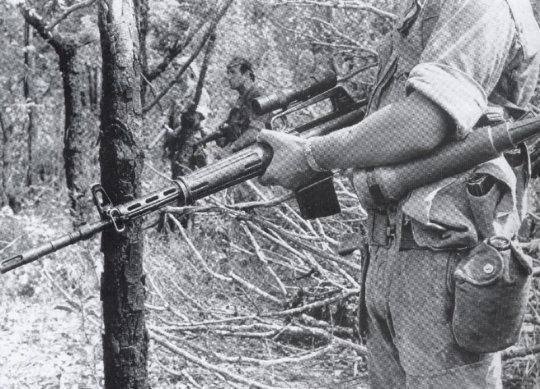
While the overall performance of these prototypes impressed the Springfield Armory staff, the aluminum steel composite barrel burst during torture tests they conducted.
Future models were made with a full steel flute barrel, but unfortunately, this test failure lost them the contract, and the Springfield T44 (better known as the M14) won the contract.

A short time later, Nicaragua became interested in order of 7,500 AR-10s. In an attempt to fill this order, ArmaLite signed a manufacturing license with Artillerie Inrichtingen (A.I.) an armament manufacturing company out of the Netherlands.
Unfortunately, this contract would not turn out well either. When one of the Nicaraguan generals was stress testing the rifle, the bolt sheared and flew past the General’s head, leaving him understandably angry and refusing the order.
Shortly after this A.I. lost its manufacturing license. I can’t say I blame George for losing trust in his Dutch partner after an incident like that.
Changes to the rifle were made as time went on, such as steel fluted barrels with a fitted trim for the Sudanese government and upgrades for the regulator. Sales eventually were made to Burma, Italy, Cuba, and Portugal.
Because of the deteriorating relations between the US and Cuba at the time, ArmaLite had no chance to continue selling or manufacturing for Cuba. After learning from all the failures of the previous versions, the new and improved AR-10, with a simplified gas regulator for better reliability, was sold to Portugal.
It was adopted by paratroopers in the Portuguese military, and the rifle’s accuracy was commended. Some reports state that most rifles could reliably put a 1-inch group at 100 meters.
The AR-10 never found many original, wide-scale military users. However, Knights Armament also took an interest in the rifle and, with the help of Eugene, developed the SR-25 (Stoner Rifle-25).
Like the AR-10, the SR25 was another 7.62×51, with over 60% of the parts being interchangeable with the AR-15 and M16. The SR-25 eventually found a military home with the US Special Operations Command. This was eventually adopted and named the MK-11 mod 0.
Building off of the success of the SR-25, Knights Armament came out with the M110, another 7.62×51 semi-automatic sniper rifle as a replacement for the M24 sniper system used by marksmen within the Department of Defense.
In 2011, the US military wanted to reconfigure the M110, stating they wanted a smaller, lighter version for their sniper teams.
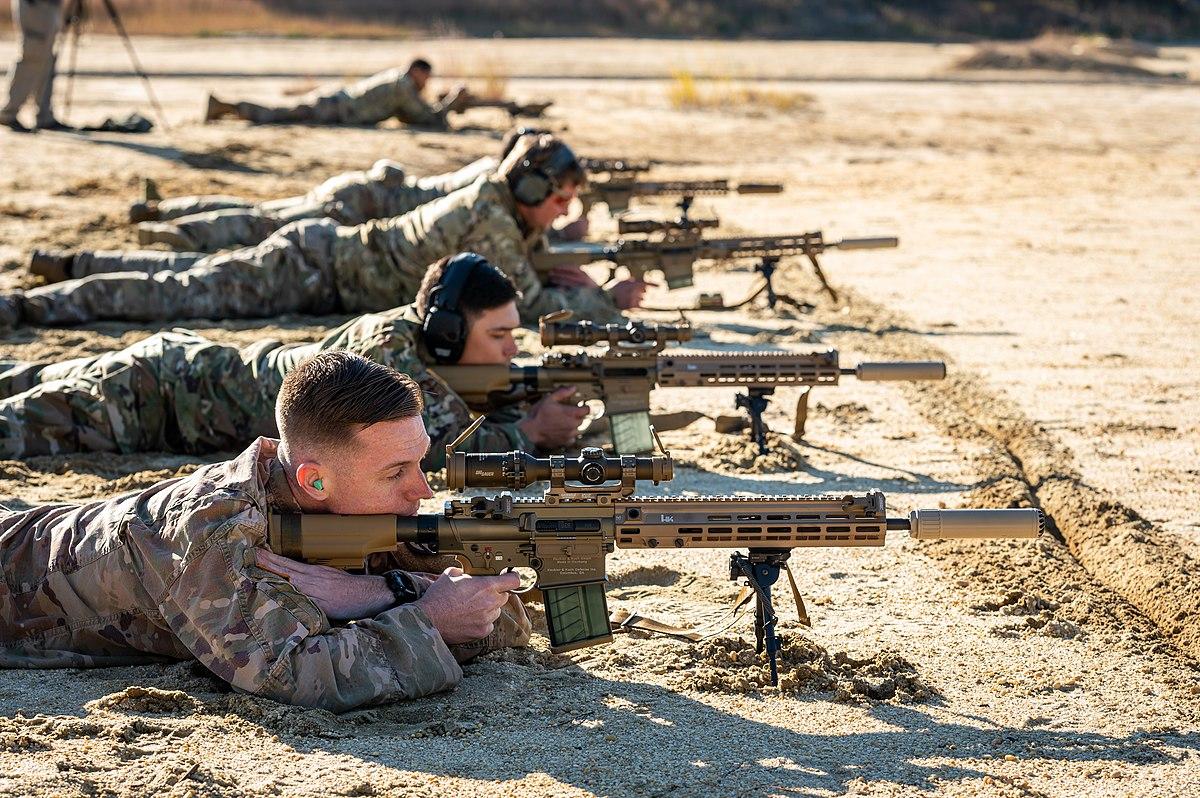
The M110A1 was one answer to this. With the addition of a collapsible stock and removable flash suppressor, the rifle’s overall weight was barely 36 in and weighed 9 lb unloaded.
It took half a century from Stoner’s original design, but the AR-10, in some ways, has found its way back into the hands of the US military, who prize it for its long-range stopping power in engagements found in places like Afghanistan.
The platform’s growing popularity, the M110A2, and M110 A3 variants were developed with an improved gas system, newer suppressor, and adjustable stocks. The conversion to being chambered in 6.5 mm Creedmoor was the notable change in the M110A3. This required new upper receivers chambered for 6.5, new muzzle brakes, and precision adjustable stocks.
Still, I consider this to be an AR-10 at least in spirit.
Modern versions of the AR-10 have also been built by ArmaLite based on the original design. Chambered in .308 (a civilian variant of the 7.62×54 NATO round), the modern AR-10 holds a lot of value for some over other .223-chambered platforms. For a time, Brownells also produced reproductions of Stoner’s original design, if you’re lucky to find one.
As far as a short answer to the question: both the military and civilians use the AR-10 today. The interesting bit to me here is that it took both groups nearly half a century to realize that Stoner was right in the mid-1950s. The US military has once again seen the wisdom in long-range semi-automatic rifles.
This stopping power and accuracy are also just as important when it comes to hunting in the civilian world; being able to hunt a deer or elk from a farther range and also having the power to make sure it gets put down in the first shot is a huge advantage.
The semi-automatic capability of the AR-10 allows for fast follow-up shots as well when compared to other bolt action rifles used for hunting.
The only downside of having the AR-10 fully loaded and equipped to go hunting is that it will be heavier than your standard wooden bolt action. And while that may not be a problem to some of you, I know after hiking for a couple of miles, those ten or so few extra pounds make a difference.
Its ability to effectively send rounds down range has also gotten its attention in the competitive shooting world. ArmaLite even offers an AR-10 specifically built for competition shooting.
Types of AR-10s
Here, we’re going to distinguish between four general types of AR-10, though there is some overlap between them.
Retro AR-10s
Brownells currently sells a reasonably faithful version of Stoner’s original AR-10 design, and it certainly looks and feels like a classic AR. Besides the furniture, one feature makes these different from Stoner’s original — the first AR-10 charged at the top of the receiver instead of the back.
You’ll see this as what looks like a second trigger in what we now call the carry handle. Initially, the carry handle was intended to protect the charging handle and house the rear sights.
Modern AR-10s
Second, more modern AR-10s look and feel like the contemporary AR-15s many of us are used to as primary rifles. These charge in the back and usually come with some variation of tactical stock and an upper receiver/rail system with room for lots of accessories.
This is what you want if you’re looking to mount a bipod, scope, and the standard kit for long-range shooting in the 21st century.
Long-Range AR-10s
Thirdly, most AR-10s have longer barrels, exceeding 16″. That length helps maximize the cartridge’s effective range by letting all of the powder of the .308 round burn off, making the AR a generally accurate rifle at ranges greater than that possible with the 5.56mm.

The longer barrel also helps to cut down on muzzle flash and recoil, always a good thing. A good example is the Stag Arms Stag 10 Marksman, which we reviewed in-depth.
AR-10 Pistols
Fourth, there are short-barreled AR-10s, all the way down to AR-10 pistols with barrels of 10” or so.
These do not take full advantage of the .308 as the short barrel lengths do not allow the bullet to reach its maximum velocity, but they are a lot of fun on the range and tend to shoot fireballs out of the muzzle from the burning gunpowder.
We dove deep into the world of .308 pistols and came up with some recommendations.
As a final note, some places market AR-10s in both direct gas impingement and gas-piston systems. To get a little selective here, only direct gas systems are proper AR-10s, which is the system used in the original design.
However, many gas piston guns, which borrow elements from other contemporary platforms such as the AK series of rifles, are excellent in their own right.
They look and feel close enough to an AR that we don’t need to correct people about it in person, but technically, they’re not ARs if you’re being strict in the design interpretation.
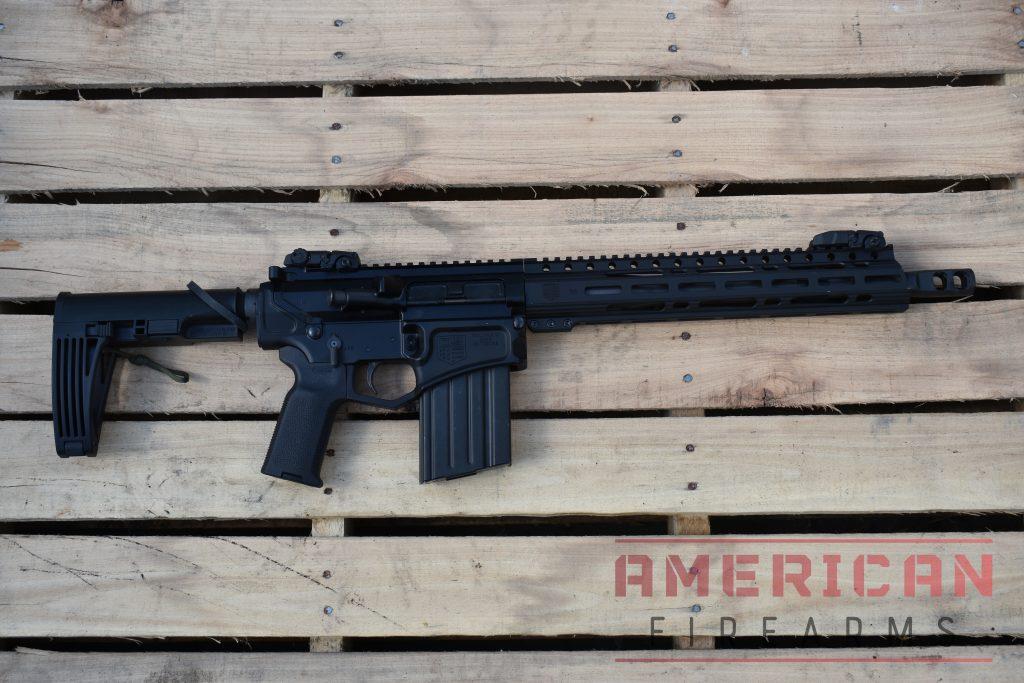
DPMS LR-308 VS Armalite AR-10
Here’s where things get a little messy in the AR-10 world. Unlike the AR-15 platform, which has largely standardized around mil-spec dimensions, AR-10s come in two primary flavors that absolutely do not play nice together: DPMS pattern (also called LR-308) and ArmaLite pattern. Think of them as the Chevy vs Ford of the AR-10 world — both will get you where you’re going, but don’t expect parts to swap between them.
This isn’t just an academic distinction. Pick the wrong upper for your lower, and you’ll have an expensive paperweight. Order the wrong bolt carrier group, and you’re looking at a return trip to the parts supplier. Understanding these patterns before you buy — or build — can save you serious headaches and money down the road.
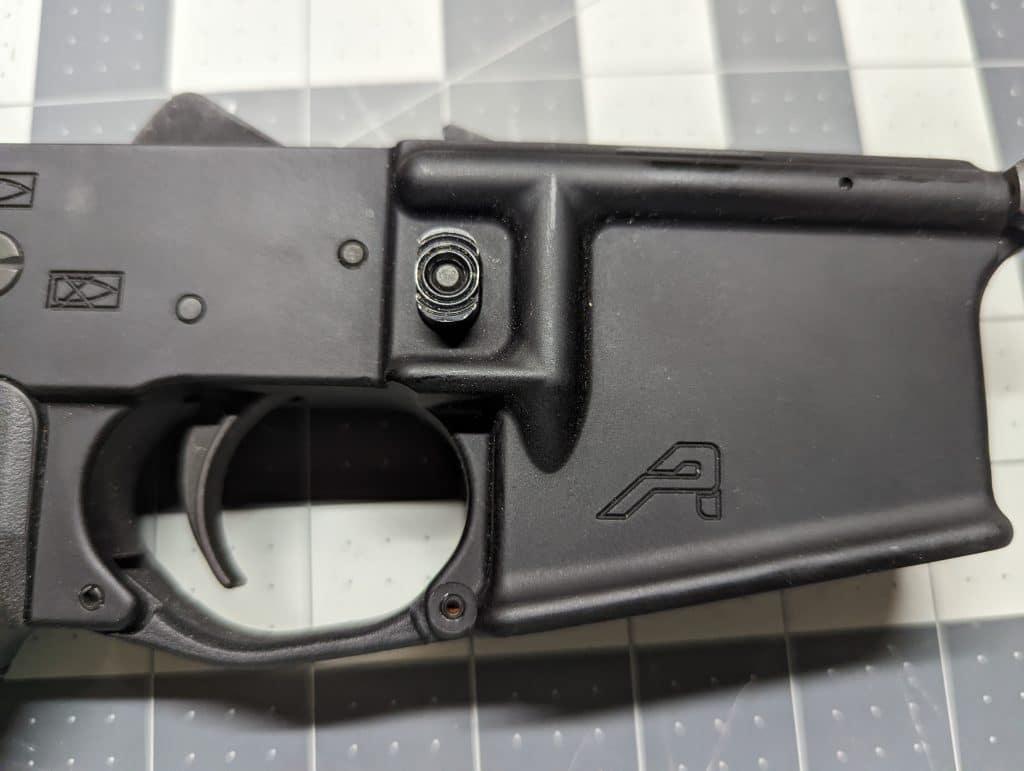
The Two Standards Explained
ArmaLite Pattern: The Original
The ArmaLite pattern traces its lineage directly back to Eugene Stoner’s original design and the Knight’s Armament SR-25 that established the modern AR-10 standard. When you hear someone talk about “mil-spec” AR-10s, they’re usually referring to this pattern.
ArmaLite pattern rifles use the original dimensions and specifications, which means they’re technically more “correct” from a historical standpoint. If you’re a purist who wants to own a piece of firearms history, or if you’re building something that needs to interface with actual military hardware, ArmaLite pattern is your only choice.
DPMS Pattern: The Market Leader
DPMS (Defense Procurement Manufacturing Services) developed their LR-308 pattern in the early 2000s as a more commercially viable alternative. Rather than licensing ArmaLite’s designs, they created their own specifications that are similar but not identical.
Here’s the kicker: DPMS pattern has become the de facto standard for most manufacturers. When you walk into a gun store and see an “AR-10” on the shelf, there’s a good chance it’s actually DPMS pattern, even if it’s not labeled as such.
Key Differences That Matter
Upper and Lower Receiver Interface
The most critical difference is how the upper and lower receivers mate together. The pin holes, receiver extensions, and overall dimensions are different enough that you simply cannot mix and match between patterns. An ArmaLite upper will not fit on a DPMS lower, period.
Bolt Carrier Groups
DPMS and ArmaLite bolt carriers are not interchangeable. The bolt extensions, cam pins, and carrier dimensions are different. Try to run the wrong BCG in your rifle, and you’ll quickly discover that “close enough” doesn’t work when it comes to precision-machined parts operating under high pressure.
Buffer Systems
The buffer tubes, springs, and weights are pattern-specific. DPMS uses a different thread pitch and overall system design compared to ArmaLite. Using the wrong buffer system can lead to cycling issues, increased wear, or even dangerous malfunctions.
Magazines
Here’s where it gets really fun: magazine compatibility varies even within patterns. Some DPMS rifles use SR-25 pattern magazines, others use their own proprietary design. Some ArmaLite rifles are picky about which magazines they’ll reliably feed from.
The safest bet is to stick with magazines specifically recommended by your rifle’s manufacturer, at least until you’ve established a reliability baseline.
Gas Systems
While both patterns use direct impingement, the gas tube lengths, gas block dimensions, and overall gas system specs can vary. This affects how the rifle cycles and how you might tune it for different loads or suppressors.
What’s Actually Compatible
Don’t despair — some parts do cross over between patterns:
The Good News:
- Triggers and trigger components
- Most springs and detents
- Roll pins and takedown pins
- Threaded brass inserts
- Many small internal parts
- Most accessories (optics, slings, etc.)
The “Maybe” Category:
- Some handguards (check manufacturer specs)
- Certain stocks (verify buffer tube compatibility)
- Some charging handles (but not all)
The “Absolutely Not” Category:
- Upper and lower receivers
- Bolt carrier groups
- Buffer systems
- Barrels (different extension specs)
- Many gas system components
Which Pattern Should You Choose?
Go DPMS Pattern If:
- You want the widest selection of parts and accessories
- Budget is a primary concern
- You’re building a general-purpose rifle
- You like having options from multiple manufacturers
- You don’t care about historical authenticity
Go ArmaLite Pattern If:
- You want the “original” AR-10 experience
- You’re building something that needs military compatibility
- You prefer fewer but higher-quality options
- You’re willing to pay extra for authenticity
- You’re planning a clone build of military rifles
The Market Reality
Here’s the truth: DPMS pattern dominates the market. Walk into most gun stores, and the majority of “AR-10s” on the shelf will be DPMS pattern, even if they’re branded as something else. Manufacturers like Aero Precision, PSA, Diamondback, and many others have standardized on DPMS dimensions because it gives them access to a broader parts ecosystem.
ArmaLite pattern rifles are generally more expensive and come from fewer manufacturers, but they often represent higher-end options with better fit, finish, and historical correctness.
Building vs Buying Complete
If You’re Buying Complete: Pattern compatibility is largely handled for you. Just make sure any accessories you add are compatible with your specific rifle. When in doubt, stick with parts from the same manufacturer.
If You’re Building: This is where pattern knowledge becomes critical. Pick your pattern first, then stick with it religiously. Don’t try to mix and match — it won’t work, and you’ll waste money learning this lesson the hard way.
Start with a matched upper and lower from the same manufacturer, or at least verify compatibility before ordering. When in doubt, buy a complete lower parts kit designed for your specific pattern rather than trying to piece together individual components.
The Bottom Line
The DPMS vs ArmaLite split is one of those things that makes the AR-10 world more complicated than the AR-15 universe, but it’s not insurmountable. Pick a pattern, stick with it, and do your homework before ordering parts.
For most shooters, DPMS pattern offers the best combination of availability, price, and performance. ArmaLite pattern is the choice for purists and those who want the most authentic AR-10 experience.
Either way, you’ll end up with a rifle that delivers .30-caliber performance in a familiar AR package. Just remember: in the AR-10 world, compatibility isn’t assumed — it’s verified.
Caliber Options
One of the biggest advantages of the AR-10 platform is its ability to chamber a variety of .30-caliber cartridges that deliver significantly more power than the 5.56 NATO found in AR-15s. While .308 Winchester remains the king of the hill, modern AR-10s can handle everything from the classic .308 to newer precision cartridges like 6.5 Creedmoor. Here’s what you need to know about your options.
The Big Four: Most Common AR-10 Calibers
| Caliber | Best For | Effective Range | Bullet Weight Range | Barrel Length Sweet Spot |
|---|---|---|---|---|
.308 Winchester/7.62 NATO | All-around use hunting tactical | 800+ yards | 147-180 grains | 16"-20" |
6.5 Creedmoor | Long-range precision competition | 1000+ yards | 120-147 grains | 20"-24" |
.260 Remington | Long-range hunting precision shooting | 900+ yards | 120-140 grains | 20"-22" |
6.5 PRC | Extreme long-range large game | 1200+ yards | 143-156 grains | 22"-26" |
.308 Winchester/7.62 NATO: The Gold Standard
The .308 Winchester is the bread and butter of the AR-10 world, and for good reason. It’s been dropping game and enemy combatants for over 70 years, with a proven track record that’s hard to argue with.
Why .308 Dominates:
- Ammunition availability: Find it anywhere, from gas stations to gun stores
- Bullet selection: Massive variety from 110-grain varmint loads to 200-grain thumpers
- Proven terminal performance: Reliable expansion and penetration on game
- Military heritage: Battle-tested reliability and effectiveness
- Affordability: Generally the cheapest centerfire option to shoot regularly
Real-World Performance: The .308 delivers roughly 2,600 fps with a 168-grain bullet from a 20-inch barrel, maintaining supersonic flight past 900 yards. Energy at the muzzle runs around 2,700 ft-lbs — more than double what you get from 5.56 NATO. That energy translates to decisive terminal performance on everything from whitetails to elk.
Best Applications:
- General-purpose hunting (deer, elk, wild boar)
- Tactical/defense applications
- 3-Gun competition
- New AR-10 owners learning the platform
6.5 Creedmoor: The Long-Range Darling
Developed by Hornady in 2007, the 6.5 Creedmoor has taken the precision shooting world by storm. It’s essentially a necked-down .308 case that launches high-BC bullets at moderate velocities for exceptional long-range performance.
Ballistic Advantages:
- Superior ballistic coefficient: Less wind drift at long range
- Flatter trajectory: Easier holdovers at extended distances
- Less recoil: More comfortable for extended shooting sessions
- Excellent accuracy: Often shoots sub-MOA right out of the box
Performance Numbers: A 140-grain 6.5 Creedmoor bullet leaves a 22-inch barrel at approximately 2,710 fps with about 2,280 ft-lbs of energy. While it starts with less energy than .308, it retains velocity better downrange, making it superior for long-range work.
Best Applications:
- Precision rifle competition (PRS, NRL)
- Long-range hunting (antelope, deer at extended distances)
- Training for extreme long-range shooting
- Shooters who want maximum accuracy with manageable recoil
Trade-offs: More expensive than .308, smaller bullet selection, and less readily available in rural areas. For hunting large, thick-skinned game at close range, the .308’s heavier bullets may be preferable.
.260 Remington: The Unsung Hero
The .260 Remington does everything the 6.5 Creedmoor does, but it got there first. Based on the .308 case necked down to 6.5mm, it offers similar ballistic performance but with less marketing hype.
Why Consider .260 Rem:
- Excellent long-range performance: Nearly identical to 6.5 Creedmoor
- Uses .308 brass: Easy to reload if you already shoot .308
- Less crowded market: Sometimes better deals on rifles and ammo
- Proven hunting cartridge: Decades of successful field use
Performance Profile: Ballistically, the .260 Remington and 6.5 Creedmoor are virtual twins. Both launch 140-grain bullets at similar velocities with comparable downrange performance. The main difference is market support — 6.5 Creedmoor has much wider ammunition selection and factory support.
Best For: Handloaders who want 6.5 Creedmoor performance without paying 6.5 Creedmoor prices, or shooters who value proven cartridges over marketing trends.
Other Caliber Options
6.5 PRC (Precision Rifle Cartridge) The newest kid on the block, designed specifically for extreme long-range shooting. Offers superior performance to 6.5 Creedmoor at the cost of increased recoil, barrel wear, and ammunition expense. Best suited for dedicated long-range platforms with 24″+ barrels.
.243 Winchester Occasionally seen in AR-10 platforms, the .243 offers excellent long-range accuracy with minimal recoil. Limited to smaller game due to bullet weight restrictions, but excellent for varmints and youth shooters.
7mm-08 Remington Another .308-based cartridge that splits the difference between .243 and .308. Good all-around performance but limited market support in the AR-10 world.
Ballistic Comparison: 500-Yard Performance
| Caliber | Bullet Weight | Muzzle Velocity | 500-Yard Velocity | 500-Yard Energy | Wind Drift (10mph) |
|---|---|---|---|---|---|
.308 Win | 168gr | 2650 fps | 2150 fps | 1725 ft-lbs | 17.2" |
6.5 Creedmoor | 140gr | 2710 fps | 2280 fps | 1620 ft-lbs | 13.8" |
.260 Rem | 140gr | 2700 fps | 2270 fps | 1605 ft-lbs | 14.1" |
6.5 PRC | 147gr | 2910 fps | 2470 fps | 1990 ft-lbs | 12.5" |
Note: Ballistics calculated from 22-inch barrel with standard factory loads
Choosing Your Caliber
For Your First AR-10: Go with .308 Winchester. It’s the most versatile, affordable, and widely supported option. You can hunt anything in North America with it, ammunition is everywhere, and you’ll have the widest selection of rifles to choose from.
For Competition Shooting: 6.5 Creedmoor dominates the precision rifle competition world for good reason. The superior ballistics and manageable recoil make it easier to spot impacts and make quick corrections.
For Hunting Applications:
- Close to medium range (under 400 yards): .308 Winchester
- Long-range hunting: 6.5 Creedmoor or .260 Remington
- Large, dangerous game: Stick with .308 and heavy bullets
For Maximum Long-Range Performance: 6.5 PRC if you’re willing to deal with increased cost and barrel wear, or 6.5 Creedmoor if you want the best balance of performance and practicality.
Ammunition Considerations
Factory Ammunition Availability:
- .308 Winchester: Available everywhere, from budget surplus to premium match loads
- 6.5 Creedmoor: Widely available, extensive factory match load selection
- .260 Remington: Limited but adequate factory selection
- 6.5 PRC: Good selection but more expensive
Reloading Potential: All these cartridges reload well, but .308 Winchester offers the most flexibility with bullet weights ranging from 110 to 220 grains. The 6.5mm cartridges are more limited but excel with high-BC bullets in the 120-147 grain range.
The Bottom Line
While it’s tempting to chase the latest and greatest cartridge, remember that shot placement matters more than caliber selection. A well-placed .308 bullet will outperform a poorly placed 6.5 PRC shot every time.
For most shooters, .308 Winchester remains the smart choice for a first AR-10. It’s proven, versatile, and won’t break the bank to shoot regularly. Once you’ve mastered the platform, then consider specializing with something like 6.5 Creedmoor for competition or long-range work.
Whatever caliber you choose, make sure your rifle’s barrel length matches your intended use. Short barrels handicap long-range cartridges, while unnecessarily long barrels add weight without meaningful benefit for close-range applications.
Important Features
When it comes to an AR-10, there are four features that we look for before making a purchase recommendation.
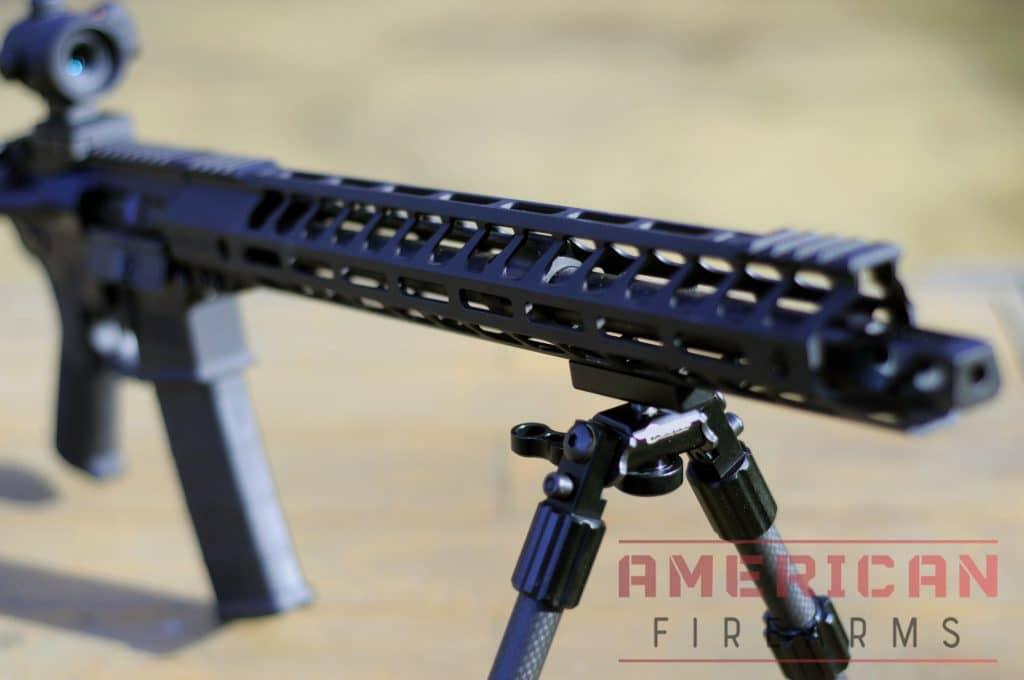
Barrel Length
The first, and arguably most important, is the barrel. To get the most out of the .308, we want a barrel over 16” in length to maximize velocity.
From there, we prefer a barrel that is cold hammer-forged to guarantee a longer barrel life, though this only matters if you plan on shooting a lot of rounds at fairly high rates.
We also stay away from chrome-lined barrels: this holdover from the M16 days is fantastic for reducing corrosion in, say, Vietnamese jungles but may very slightly degrade accuracy. For more on AR barrels check out or explainer.
Trigger
Second, the trigger of an AR-10 is vitally important. For our AR-15 rifles, we’re mostly okay with military triggers that have a little bit of play and some grit. But with an AR-10, mainly when shooting much longer distances, a trigger with unwanted play can throw off shots, which we’re trying to avoid here.
Instead, we recommend trying to find a model with an upgraded trigger or, ideally, one that has a user-adjustable trigger from the factory so that you can dial it to your preferences.
Fore-end & Handguard
A third thing we look for in a complete rifle is the fore-end. Ideally, an AR-10 will come with a handguard that free-floats the barrel and gives you plenty of room to install accessories.
We like to run our AR-10s with bipods, as they tend to be rifles we plan to use to shoot longer ranges rather than using them for a general-purpose rifle like the AR-15.
If you’re looking to add a complete upper to an existing lower, just look for one from the same brand to eliminate any headaches with fit.
Stock
Finally, take some time to think about the stock. Many AR-10s come with fixed stocks, but this is slowly changing as consumers want more adjustability and interoperability with the AR-15s of the world.
With that said a fixed stock can offer a more accurate option, assuming you get one with a length of pull that is comfortable and consistent for you. We choose to go with stocks that have some means of user adjustment so that we can go from standing to kneeling and prone while maintaining a good sight picture and consistent trigger pull.
This one is a lot of personal preference, but it’s certainly worth thinking about before making a purchase.
What We’re Looking Forward To
While there’s less innovation on the .308 side of the AR aisle, that’s not to say there’s nothing happening.
We’re chomping at the bit to put Ruger’s new Small-Frame Autoloading Rifle or SFAR to the test. You have both 16-inch and 20-inch options, which both come in around the 7-ish pound range and include lots of features.
This is *much* lighter than Ruger’s SR-25/AR-10 style 7.62 NATO-chambered rifle, the SR762which tipped the scales at almost 9 pounds unloaded, sans optics, and with a short 16-inch barrel.
We’re really curious to see how this lighter rifle performs at the range.
AR-10 Pricing
Under $1,000
For under $1,000, most gun owners in the market can expect complete rifles that simply work.
The trigger might be nothing special, and it likely will not have many fancy features such as upgraded charging handles or the best furniture in the business.
Still, these can be excellent basic rifles for people on a budget. In this price range, you’ll also almost certainly have to provide your own optics as well, which is excellent if you have a specific optic in mind or, as many AR shooters, have an unused scope sitting in a drawer begging to be put to use.
$1,000 more over
Over the $1,000 mark, and the sky is more or less the limit here. You can pick and choose the features that you like. For instance, the more you spend, the more likely you are to find features like high-end barrels, better muzzle devices, included optics, and so on.
Brands in the space are the likes of Aero Precision, Daniel Defense, and Barrett.
Whatever your budget is, the AR-10 is a platform that’s more than worth exploring if you want to start shooting at longer distances but also want the familiar controls of an AR platform rifle.
Especially with the development of new .30 caliber bullets and loadings, the AR-10 will likely be here to stay for years.
Additional Resources
- ATF, Rifles, 06/05/2015
- ATF, National Firearms Act Handbook
- NRA Museum, Armalite AR-10 Semi-Automatic Rifle
- Disassembled AR-10 Handguard
FAQs
What does the “10“ in AR 10 stand for?
What is difference between an AR-10 and AR 15?
Are AR-10s legal?
Is an AR-10 the same thing as a .308?
Coming Soon
May 31, 2025 — Reorganized guide structure and added comprehensive caliber comparisons, DPMS vs ArmaLite pattern details, and expanded foundational sections for better user navigation.
Sign up for our newsletter
Get discounts from top brands and our latest reviews!


